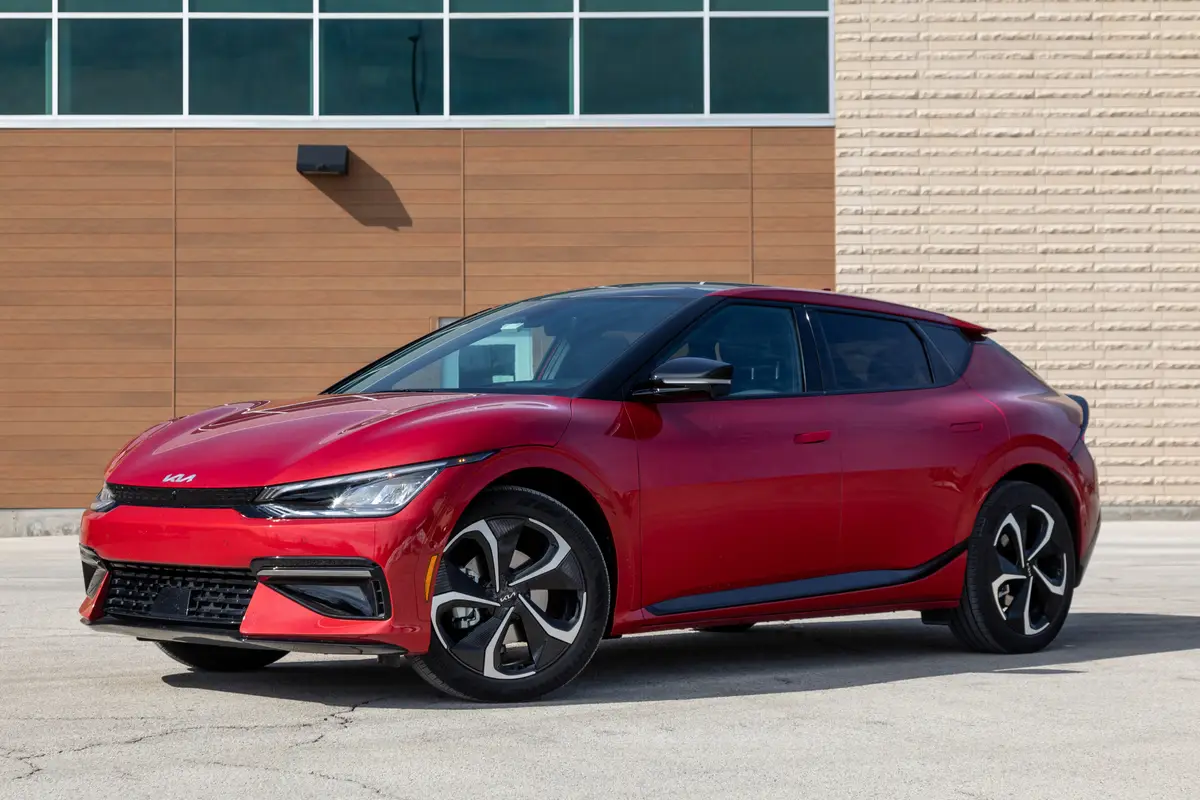
The verdict: The 2022 Kia EV6 electric crossover is easy to live with and has advantages over its competitors in regard to how it drives and charges, but it comes with some potentially large caveats.
Versus the competition: Few electric cars in this price range have the goods to qualify for the trite “Tesla-fighter” label, but the EV6 comes close.
No stranger to electric vehicles, Kia has been quietly selling them in the U.S. since the Soul EV debuted for the 2014 model year. The all-new 2022 Kia EV6 electric crossover gets the full-blown modern Kia treatment, injecting tons of design and technology into this next-generation EV.
As an EV, the EV6 is well done, with high efficiency ratings from the EPA for rear-wheel-drive versions (up to 117 mpg-equivalent combined), a driving range up to 310 miles and the ability to fast-charge at higher-powered Electrify America 350-kilowatt chargers — a feature lacking in many of its non-Tesla competitors. The EV6 also has numerous tricks up its sleeve that help it match up nicely with the Tesla Model Y, especially for buyers who don’t care for the Model Y’s minimalistic interior design or other polarizing attributes.
Related: Kia Debuts Tesla-Fighting EV6 Electric SUV With Up to Nearly 600 Horsepower
I drove an EV6 GT-Line with a long-range battery, all-wheel drive and 274 miles of estimated range, with a price tag of $57,410 (including destination). For all its high points, however, there’s one thing about it that warrants extra attention from shoppers.
Try Before You Buy
I’m not an overly tall person (6 feet tall with long legs and a short torso), yet I was never completely comfortable driving the EV6 GT-Line because my head constantly brushed up against the headliner and the ceiling-mounted grab handle. It’s not that the EV6 is a small car; it’s a high-riding hatchback (essentially a crossover) with an aggressive coupelike design that splits the difference in height between Kia’s SUVs and sedans. The EV6 has the wheelbase of a three-row Kia Telluride, is longer than a Kia Sportage and is as wide as a Kia Sorento. It has more as-measured cargo space (in our testing) than a Nissan Rogue and EVs like the Volvo XC40 Recharge and Ford Mustang Mach-E.
What kills headroom in this car is the GT-Line’s standard moonroof, which cuts headroom to 36.8 inches. The roof is a traditional tilt-and-slide unit that opens wide, so it sits deeper than a panoramic glass roof that doesn’t open, like those in the related Hyundai Ioniq 5 Limited or the Tesla Model Y. The lower-priced EV6 trim levels, Light and Wind, skip the moonroof altogether, which Kia says opens up a significant 2.2 inches of headroom; I haven’t sat in those versions yet.
Adding insult to injury in the GT-Line, the aggressively sloping rear roofline that defines the EV6’s stylized profile severely limits visibility over the shoulder and out the back window. Kia has provided some technological workarounds for the poor visibility, like available cameras that can display an image of either blind spot in the instrument panel when the associated turn signal is activated. There’s also a standard traditional blind spot monitoring system, but as manufacturers always remind drivers, you shouldn’t rely on those. I wasn’t the only editor on staff to complain about the lack of roominess; even shorter editors who drove the car said they felt “hemmed in.” Backseat passengers have it better, with 38 inches of headroom, and I had no trouble sitting in the back, so a lesser trim without the moonroof will likely have acceptable headroom.
So what does that mean for you? If you’re considering buying an EV6, find one and sit in it. In today’s wild market of limited inventory and the proliferation of factory ordering, your local dealership might not have one to try, or you might overlook a test drive just to get an order in sooner. Don’t do that. Go find one at a regional auto show, rent one through a peer-to-peer service, or drive to the nearest dealership that has an actual EV6 available. One foible on the top trim level wouldn’t normally be worth so much attention, but in February — the first month in which the EV6 was on sale in notable quantities — the GT-Line made up 60% of the listings that moved through Cars.com’s national inventory. In March, the GT-Line made up 38% of EV6 listings.
How the EV6 Drives
The EV6 is a sweetheart to drive. It’s refreshing, given many similarly priced EVs have questionable ride quality and firmness. The EV6 should be a message to other automakers: It’s OK for a car to have aggressive looks but not feel aggressive to drive, especially if that means comfort is sacrificed. The EV6 and its Hyundai Ioniq 5 cousin share the same underlying global architecture, and both feel comfort-oriented compared with the aggressively tuned Model Y, which I still think is top of this class for driving engagement and handling but bottom of the class for ride-firmness-induced discomfort.
The EV6 has only the slightest driving differences from the Ioniq 5, perhaps thanks to its 4-inch-shorter wheelbase (114.2 inches versus the Ioniq 5’s 118.1 inches). This makes it a little more eager to turn into corners and gives it a slightly choppier ride at highway speeds, but it’s not enough to make it a sportier driving option than the Hyundai. The shorter wheelbase certainly helps with the EV6’s smaller turning circle — 38.2 feet versus the Ioniq 5’s 39.3 feet. Be sure to check out our more thorough discussion of what’s different between the EV6 and Ioniq 5.
With one drive motor up front and one in the back, the AWD EV6 GT-Line makes 320 horsepower and 446 pounds-feet of torque, which Kia says propels the EV6 from 0-60 mph in 5.1 seconds; for comparison, Kia says its Stinger sports sedan with a turbocharged 2.5-liter four-cylinder hits 60 mph in 5.2 seconds.
The EV6’s acceleration is hugely dependent on your selected driving mode. In Eco mode, the EV6’s acceleration is severely hampered — not great if you need to move quickly. In Sport mode, there’s a rush of acceleration until you reach about 45 mph, when acceleration subdues. A higher-performance EV6 GT (not the GT-Line, which I drove) will come later, offering even more power and faster acceleration.
One perhaps-fun aspect of the EV6 is that you can change the acceleration sound heard inside the cabin to a number of different tones, including a customizable option that gives you a few levels to play with. None were particularly engaging to me, though, so I opted to keep them off. Other people might like the spaceship audio track.
How the EV6 Charges
The EV6 comes with no standard mobile charging equipment for plugging the car into a household outlet, though an accessory Level 1 (“trickle”) charger can be purchased from the dealership. At Level 1 speeds, going from empty to full takes roughly 68 hours for the long-range battery and 51 hours for the short-range battery. Obviously, this isn’t how you should charge your own EV, so if you’re going to get an EV6, you should consider installing a Level 2 charger at home. See our home charging guide to help you determine what kind of equipment you need.
With a Level 2 charger, an EV6 with a long-range battery can go from empty to full in as little as 7 hours and 10 minutes; the short-range battery charges in 5 hours and 50 minutes. With my test car’s 274-mile estimated range, that averages out to 38 miles of range per hour; this is the more useful charging specification to seek out, given you’ll rarely be charging from empty to full.
Note that Kia’s stated maximum charge speeds result from the EV6’s competitive 10.9-kilowatt charging capacity and a 48-amp Level 2 charger (a 48-amp charger requires a 60-amp circuit and hardwired installation). A lower-rated Level 2 charger will take longer. This is common among all EVs with faster home charging speeds: A Level 2 charger that simply plugs into a 240-volt outlet and is rated 40 amps or lower won’t give you the fastest listed charging speeds.
Perhaps Kia is anticipating that EV6 buyers will be seasoned EV owners and already have the requisite equipment? I think it’s acceptable that the EV6 doesn’t come with a Level 1 charger, given it makes such a small dent in battery capacity, but to not include or at least offer a Level 2 mobile charger is a missed opportunity. Lower-powered mobile Level 2 chargers can work on a house’s existing 240-volt outlet (often 30 amps). Most EVs come with at least a Level 1 charger, and some — the Ford Mustang Mach-E, Chevrolet Bolt and Bolt EUV, and the Tesla Model Y — come with a Level 1/2 mobile charger that can charge at moderate Level 2 speeds.
When it comes to public DC fast charging, Kia says the EV6 can add 217 miles of range in 18 minutes at a 350-kW fast charger, taking the battery from 10% to 80%. The EV6’s larger battery can accept up to 240 kW, while its smaller one is limited to 180 kW. These are respectable numbers, providing near parity with a Tesla Model Y, which can charge at 250 kW. The Mach-E, Volkswagen ID.4 and Volvo XC40 Recharge can accept a maximum of only 125 to 150 kW. There’s a definite advantage here for Kia versus its competitors, and Kia exploits it through its higher-voltage battery system (roughly 700 volts in the EV6 versus 400 volts in some other EVs), but it might not be as stout in practice as it seems on paper. That’s because vehicle conditions, battery temperature and ambient temperature affect how quickly any EV can actually charge.
The fastest charge times at 350-kW stations will come at roughly room temperature, according to Kia. Those were not the conditions when I drove an EV6. I charged my EV6 test car at a 350-kW charger on a 29-degree February day, and the battery went from 23% to 84% in 30 minutes, adding 163 miles of range. I observed a maximum 134.1-kW charge speed, and that only briefly. Those are strong numbers for a non-Tesla EV, but they pale in comparison to the EV6’s best-case scenario — and to how long it takes to refuel a gasoline-powered car at the pump. There’s no denying that cold weather puts a big damper on EV ownership.
Further limiting the EV6’s real-world advantage is the fact that 350-kW chargers aren’t widespread at the moment (at least not compared with Tesla superchargers) and are still found mostly along highway corridors. There are just two 350-kW stations in the Chicago area — and saying “Chicago area” is generous, given those two stations are located in Rockford and Joliet, Ill., which are 90 and 50 miles outside the city, respectively.
Kia EV6’s Tricks
Before we evaluated the new EV6 and Hyundai Ioniq 5, we deemed the Model Y a benchmark for this class — and even bought one for a long-term test car — but the EV6 has a lot to offer potential EV buyers who are turned off by some of the Tesla’s controversial features, like its lack of an instrument panel. The EV6 will be an especially enticing alternative for those who like the coupe-inspired profile.
Not only does the EV6 GT-Line have an instrument panel, its all-digital display is exceptionally informative, listing everything a driver would want to see. There’s also a head-up display on the GT-Line that shows augmented-reality navigation and driver-assist graphics, so you don’t have to look down at a touchscreen as you do in the Model Y. And more traditional doesn’t mean boring; there are still some cool tricks inside the EV6, including a spaceship command-type console with touch-sensitive controls for the heated and ventilated seats and heated steering wheel; in the Model Y, these are buried in touchscreen menus.
The Kia also brings trick functionality with the climate and media controls: A digital display between two rotary knobs can transition between climate and media functions with the press of a button, making way for the elusive volume and tuning knobs. Good luck finding traditional volume and tuning knobs in other EVs; they’re increasingly hard to come by in this class.
The EV6 takes advantage of its flat-floor EV platform by leaving the area below and ahead of the center console mostly open for storage of larger items, though it doesn’t leave as much space as the Ioniq 5.
Further taking advantage of its EV-ness in ways the Tesla doesn’t, the EV6 has power transfer capability that allows it to act like a giant portable battery, capable of powering any number of electric devices, including important home appliances in a power outage. Called Vehicle-to-Load (V2L), it’s found on Wind and GT-Line trims and includes two 120-volt AC household outlets, one in the middle of the backseat near the floor (like on an airliner) and another in the form of an adapter that plugs into the exterior charge port. They can supply as much power as a 120-volt outlet in your home, with some limitations. We even charged our long-term Model Y test car using the EV6’s power transfer capability. It was painfully slow, adding only 2 miles of range per hour, but it worked. Most home-style outlets you see in gasoline-powered cars max out at 400 watts for small devices, but the EV6’s outlets have parity with most home outlets, at 16 amps and 1,900 watts (1.9 kW).
Pricing
The EV6’s price ranges from $42,155 (all prices include destination), for the Light trim level and its smaller 58 kilowatt-hour battery and RWD, up to $57,155, for the GT-Line trim with the larger battery and AWD. Those numbers don’t include state or federal incentives, though, and the EV6 is still eligible for a full $7,500 tax credit (so long as the buyer also qualifies).
The lower-spec car still looks good on paper, with 232 miles of range and an EPA-rated combined efficiency of 117 mpg-e. That’s slightly less range than the 2022 Niro EV (a new one is on the way) but higher efficiency, which means the EV6 uses a bit less energy to travel the same distance.
The EV6’s standard equipment list is generous, including the following notable features on the entry-level Light trim level:
- 12.3-inch digital instrument panel
- Two-position memory driver’s seat
- Heated front seats
- Five USB outlets: One Type-A data port, two Type-C charge ports up front and two Type-C charge ports in back
- Wireless phone charger
- Blind spot warning
- Lane keep assist
- Lane centering
- Adaptive cruise control
- Rear cross-traffic alert
- Wired Apple CarPlay and Android Auto (like Kia’s other big-screen systems, wireless functionality is left out)
The base EV6 also brings Kia’s long 10-year/100,000-mile powertrain warranty, which covers the EV battery, and five-year/60,000-mile limited basic warranty. Kia includes 1,000 kWh of fast charging at Electrify America stations, good for up to three years before the offer expires, equating to about $430 when calculated by kWh. (EA charges 43 cents per kWh for guest and non-paid-subscription members, though rates can vary depending on whether the station charges by kWh or by time used, which is determined by state regulations.)
Going back to the GT-Line trim level I drove with the limited headroom, that EV6 cost $57,410, including a $295 GT-Line Suede Seat Package. Why am I not blinking an eye at that price tag? Because the EV6 delivers not only a fairly normal car-driving experience, it’s also a good EV experience, and that’s something that just hasn’t happened with EVs in this price range before. That headroom, though …
Choosing a lesser trim level (Light or Wind) with more headroom means losing the following features:
- Moonroof (duh)
- Aero retractable door handles (might not be a bad thing, as they froze shut during our winter test drive)
- Highway Driving Assist 2 (automatic lane change and in-lane positioning)
- Automatic evasive-steering assist, automatic collision-avoidance assist for side and oncoming lane changes
- Head-up display with augmented-reality navigation and driver assist readouts
- 20-inch wheels with AWD (again, probably OK as the ride likely improves with the standard 19-inchers)
- HomeLink functions on rearview mirror
- LED accent lighting
- Alloy pedals
It’s hard to give up the head-up display because it’s so convenient (except when wearing polarized sunglasses, which makes it hard to see), but most of these features aren’t deal-breakers, while dismal headroom and visibility certainly might be.
Alternatively, if you like what you’ve read here about the EV6’s overall strengths, it’s also worth a look across town at the Hyundai Ioniq 5, which shares many of the same strengths but lacks the headroom and visibility concerns. Note, however, that the Ioniq 5 isn’t sold in all 50 states yet, as is the EV6. For some buyers, though, the EV6’s styling might make it enticing enough to look past the problem areas in favor everything it does well, which is a lot.
More From Cars.com:
- 2022 Kia EV6 on Sale Soon, Priced From $42,115
- 2022 Kia EV6 One-Ups Hyundai Ioniq 5 With 310-Mile Max EPA Range
- Up Close With the 2022 Kia EV6: Coming Out Swinging
- Top 10 Most Efficient Electric Cars
- Best Electric Vehicle of 2022
Related Video:
Cars.com’s Editorial department is your source for automotive news and reviews. In line with Cars.com’s long-standing ethics policy, editors and reviewers don’t accept gifts or free trips from automakers. The Editorial department is independent of Cars.com’s advertising, sales and sponsored content departments.

































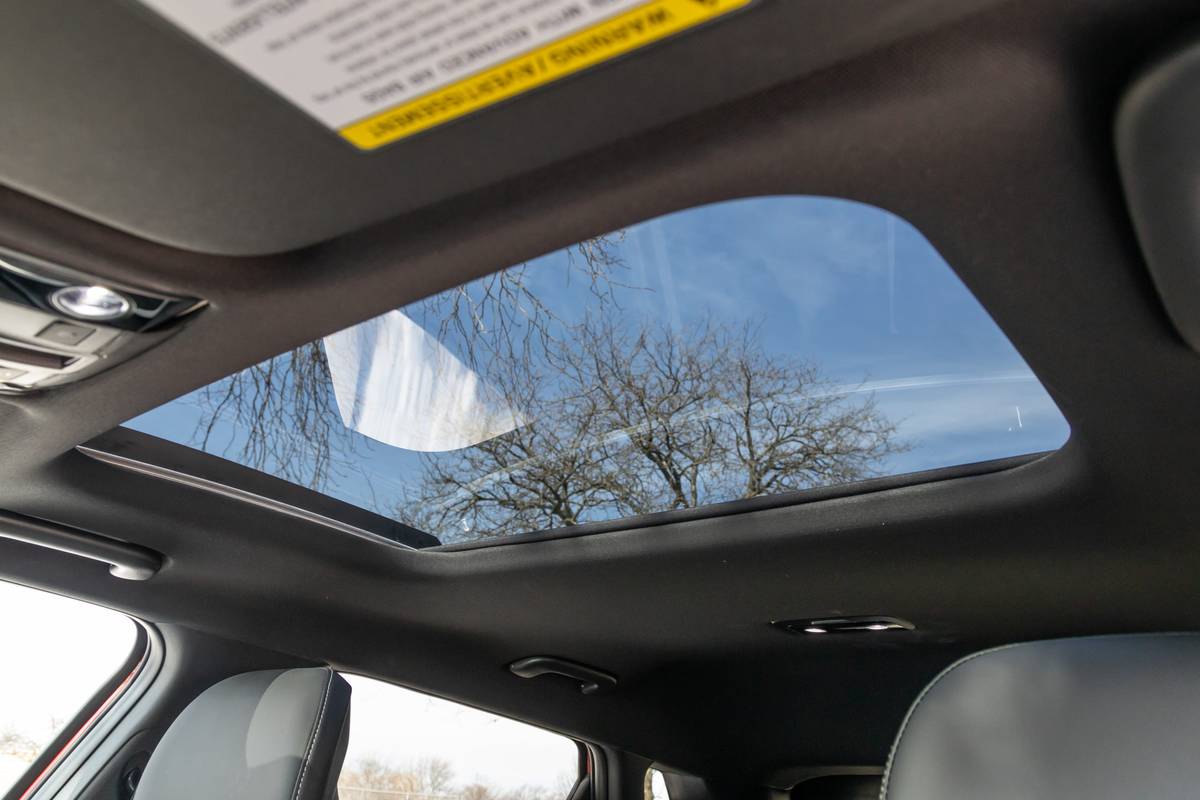
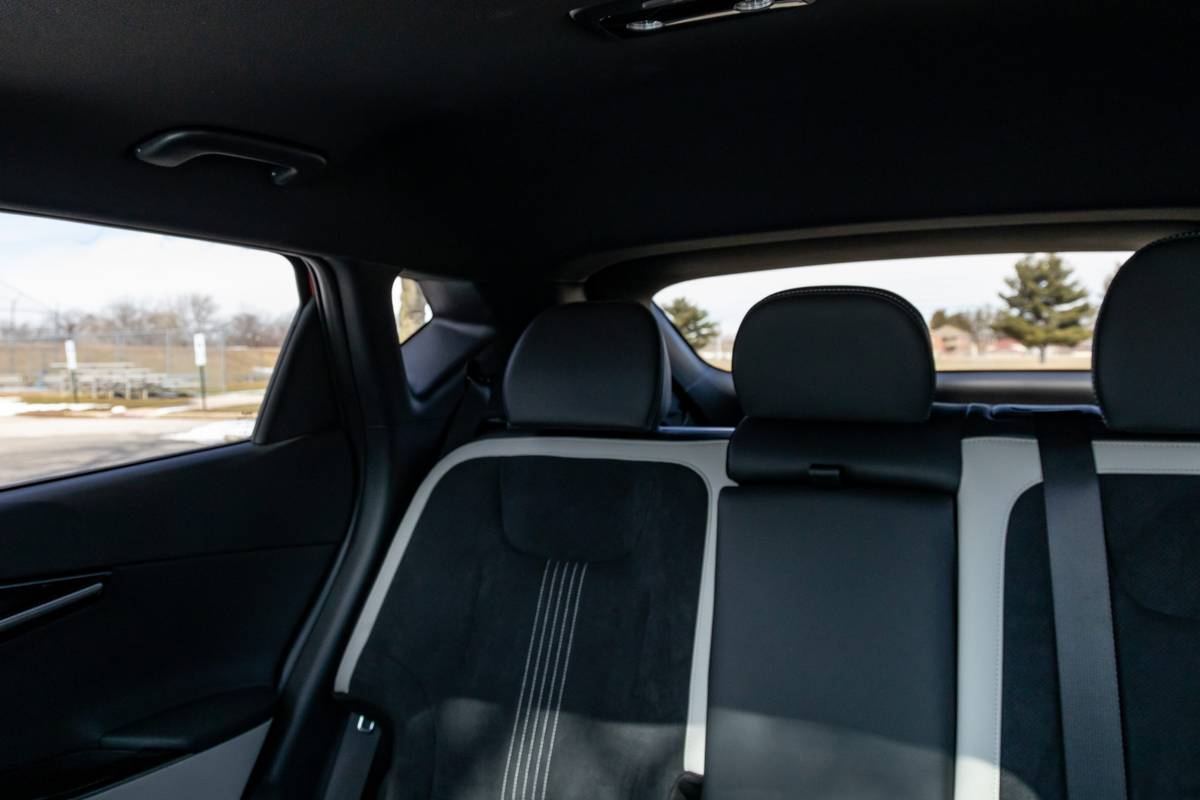
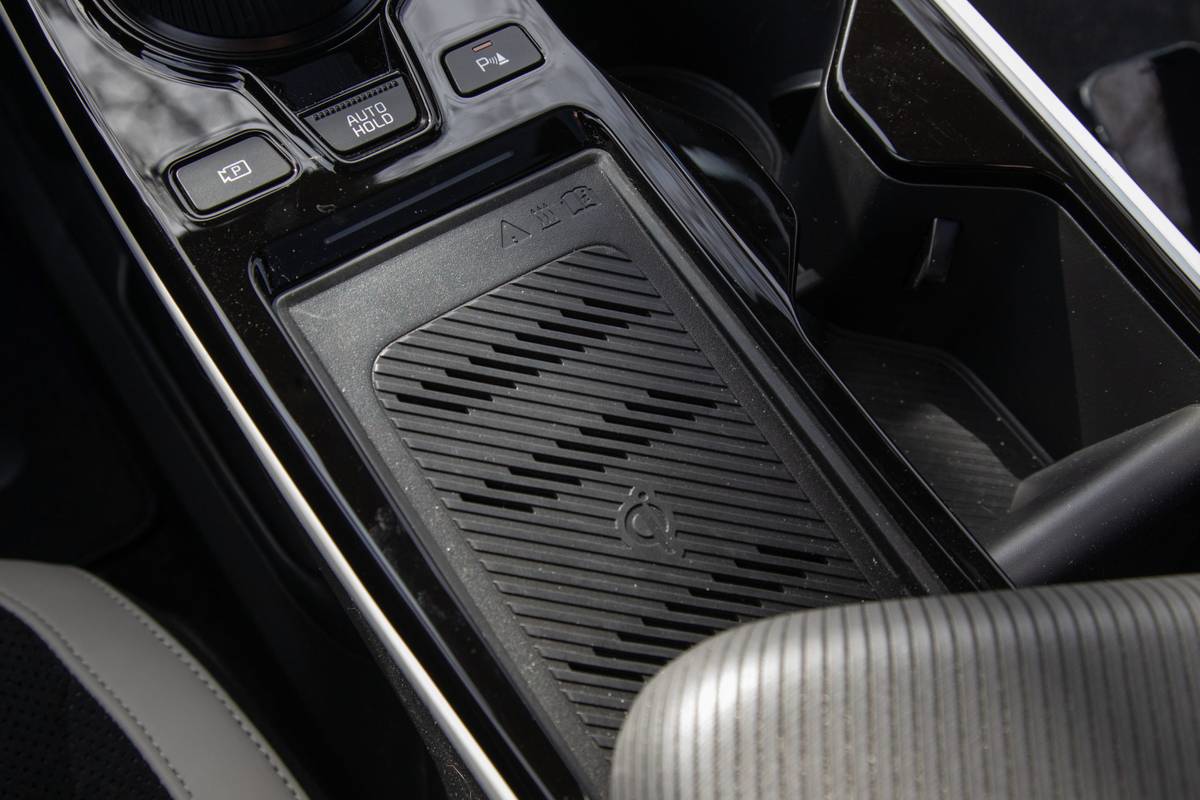
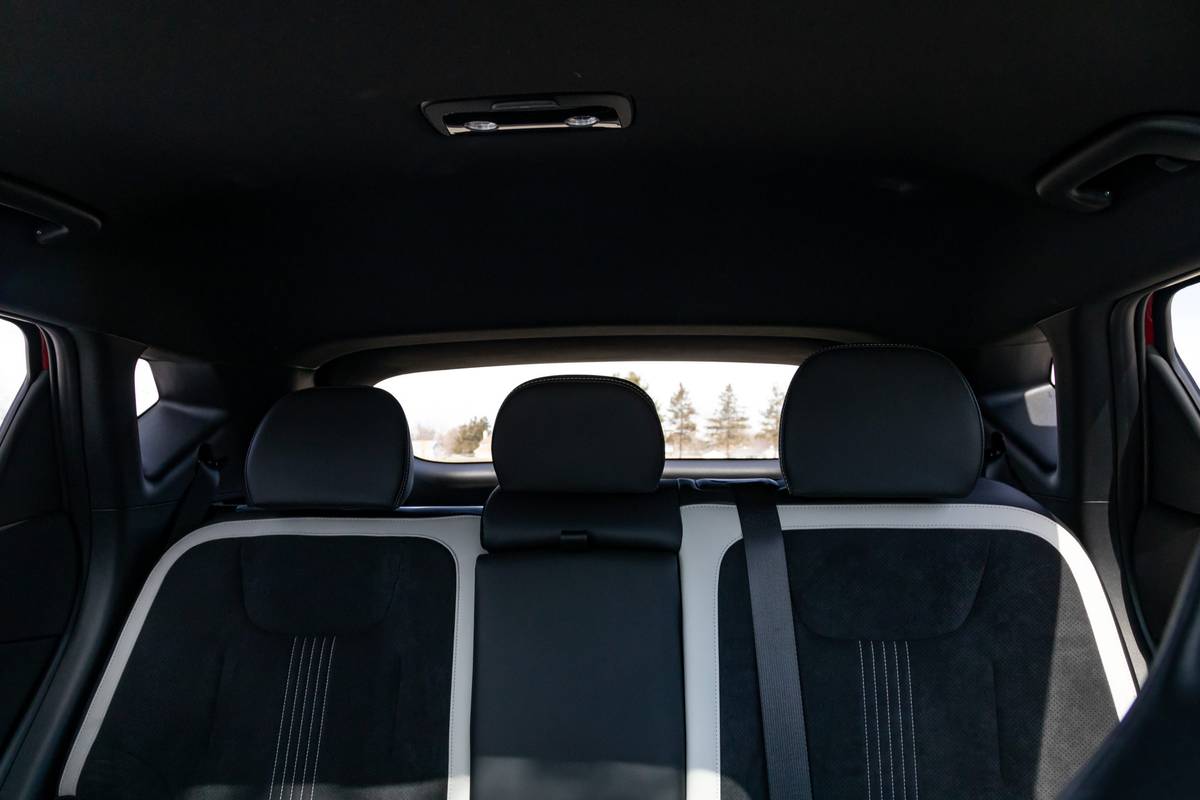

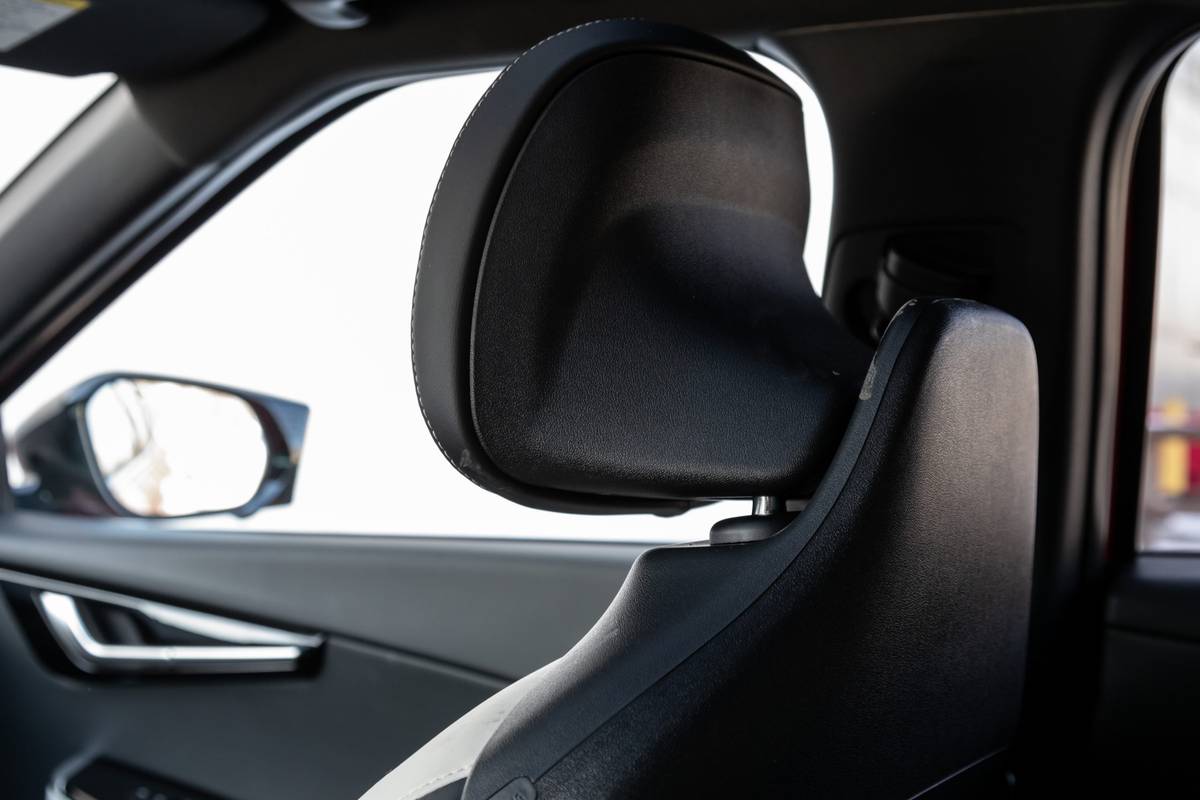
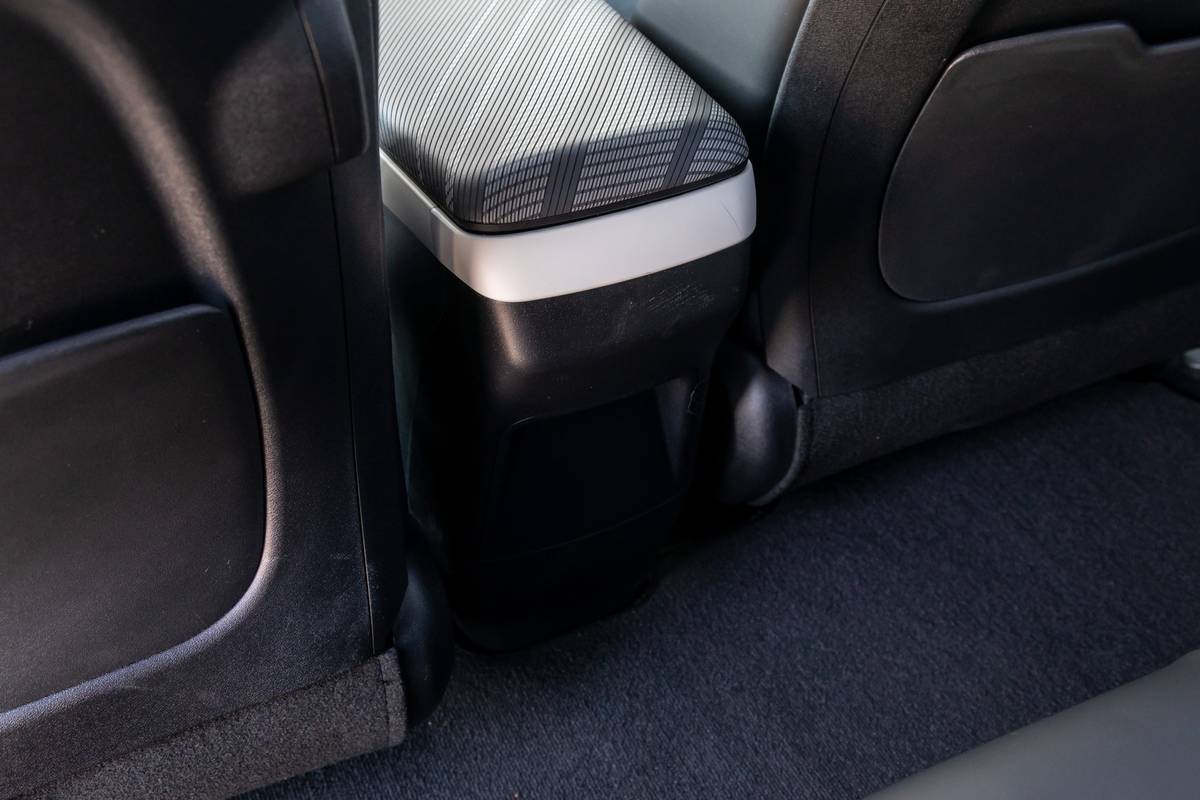

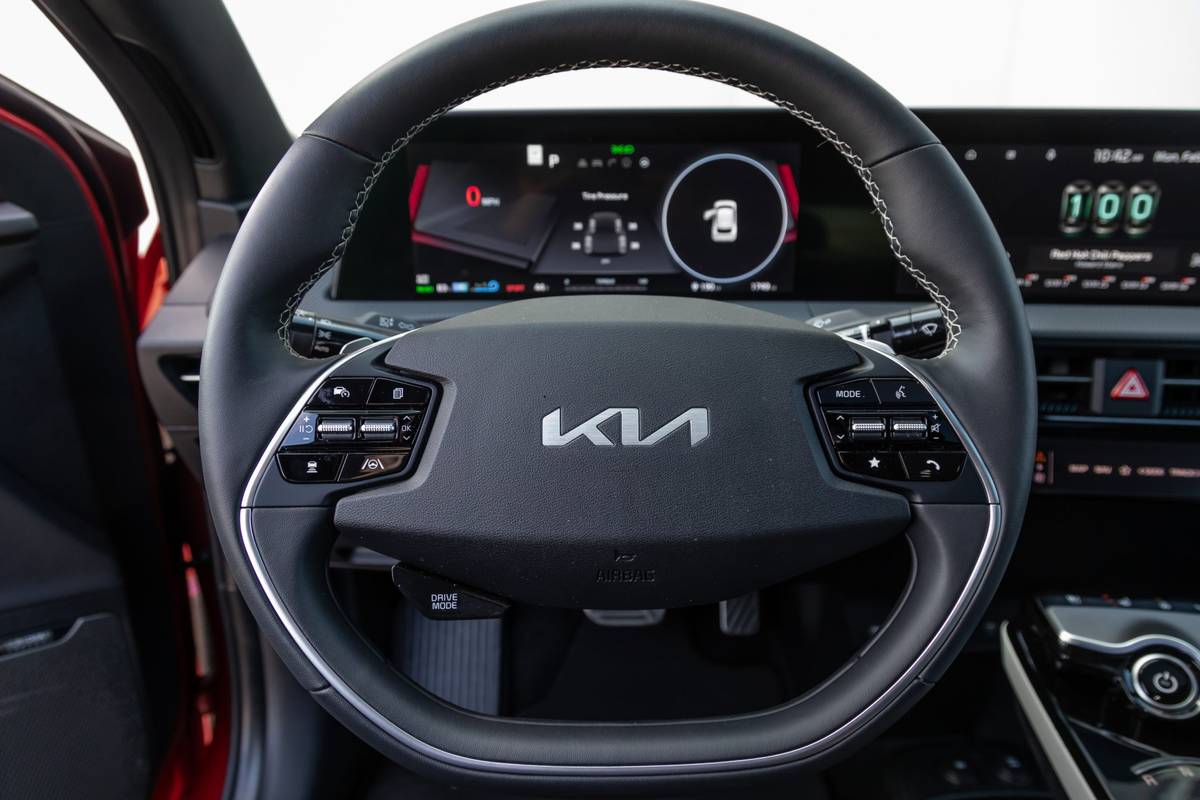
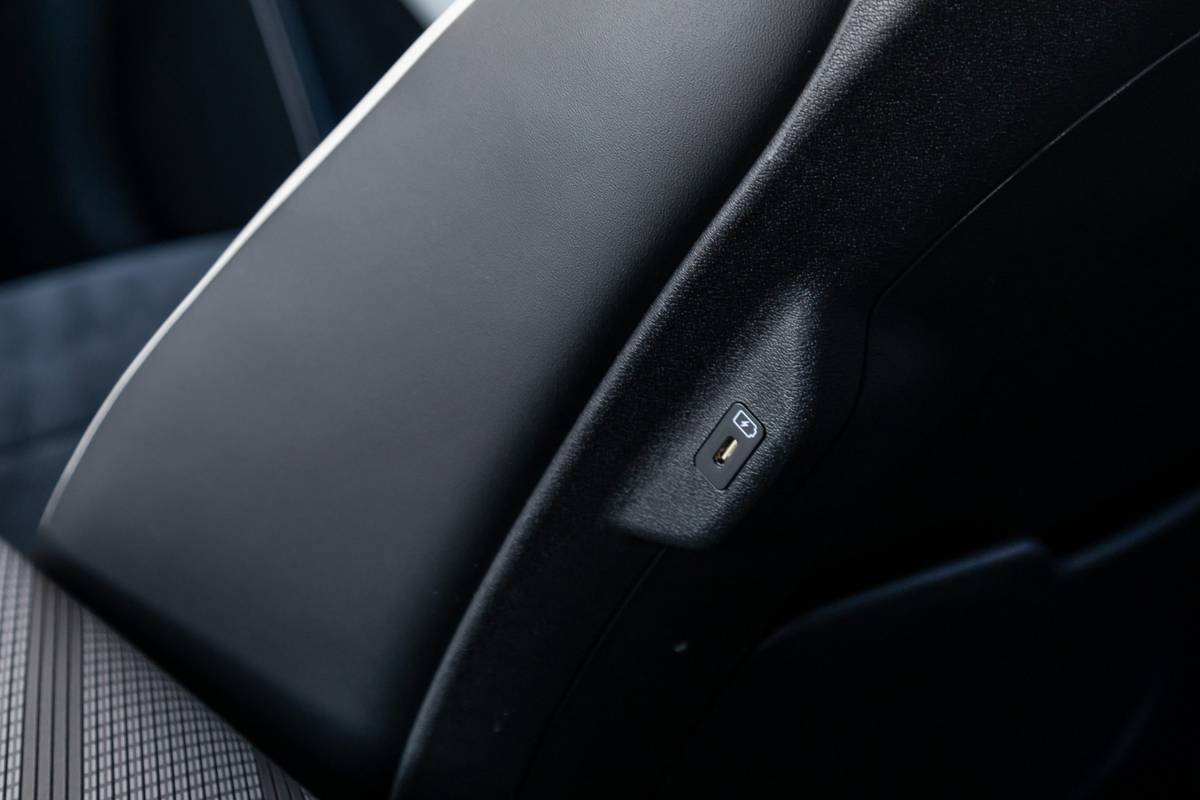
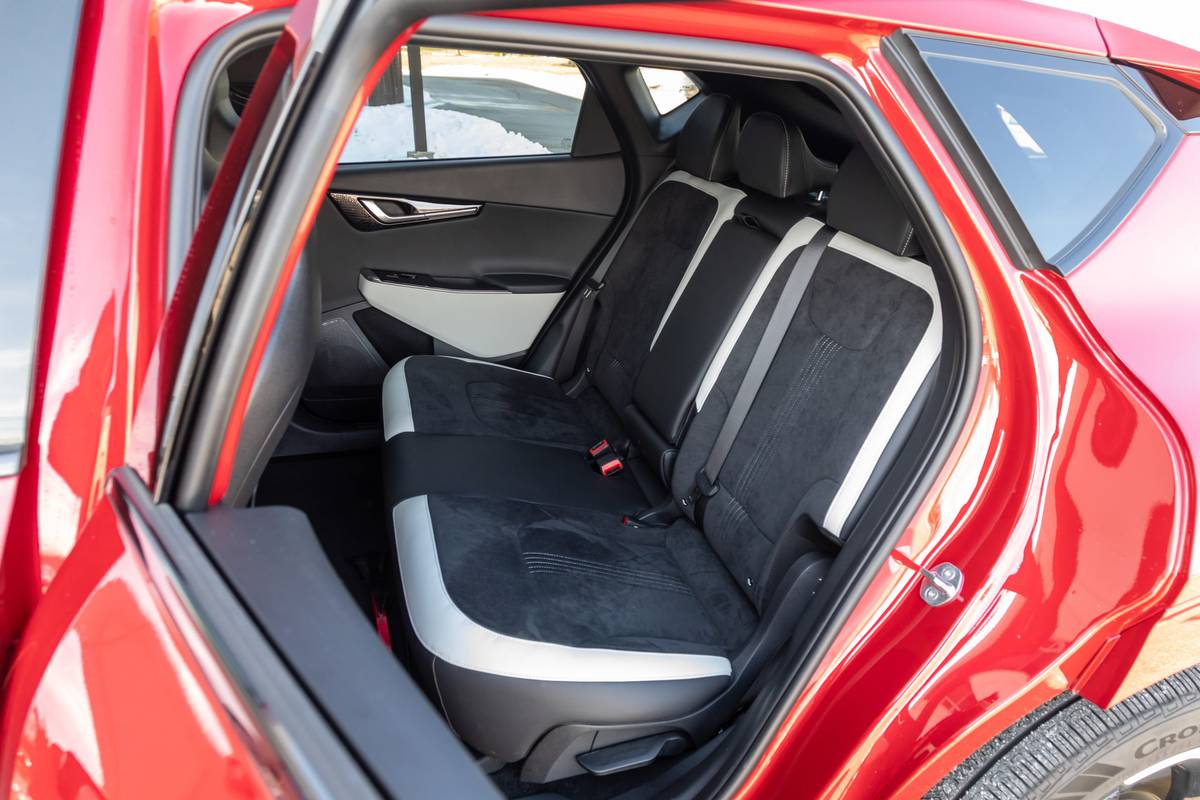

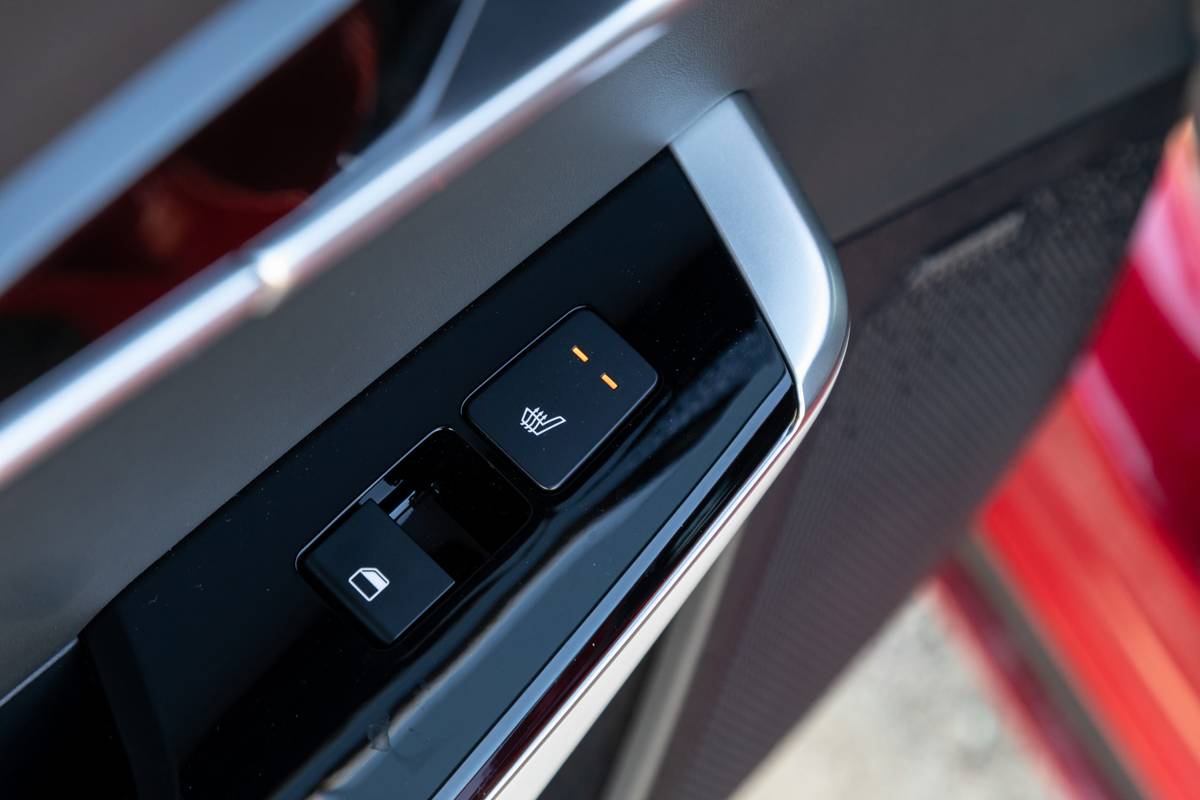
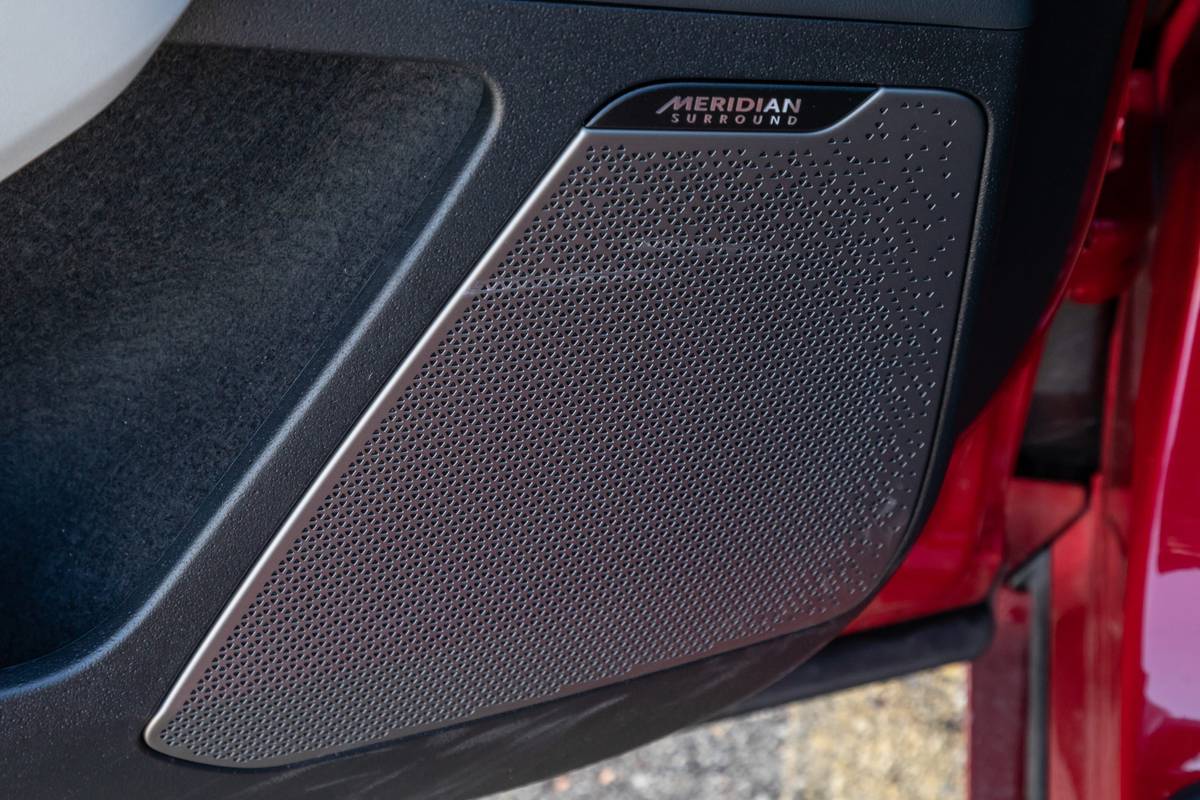

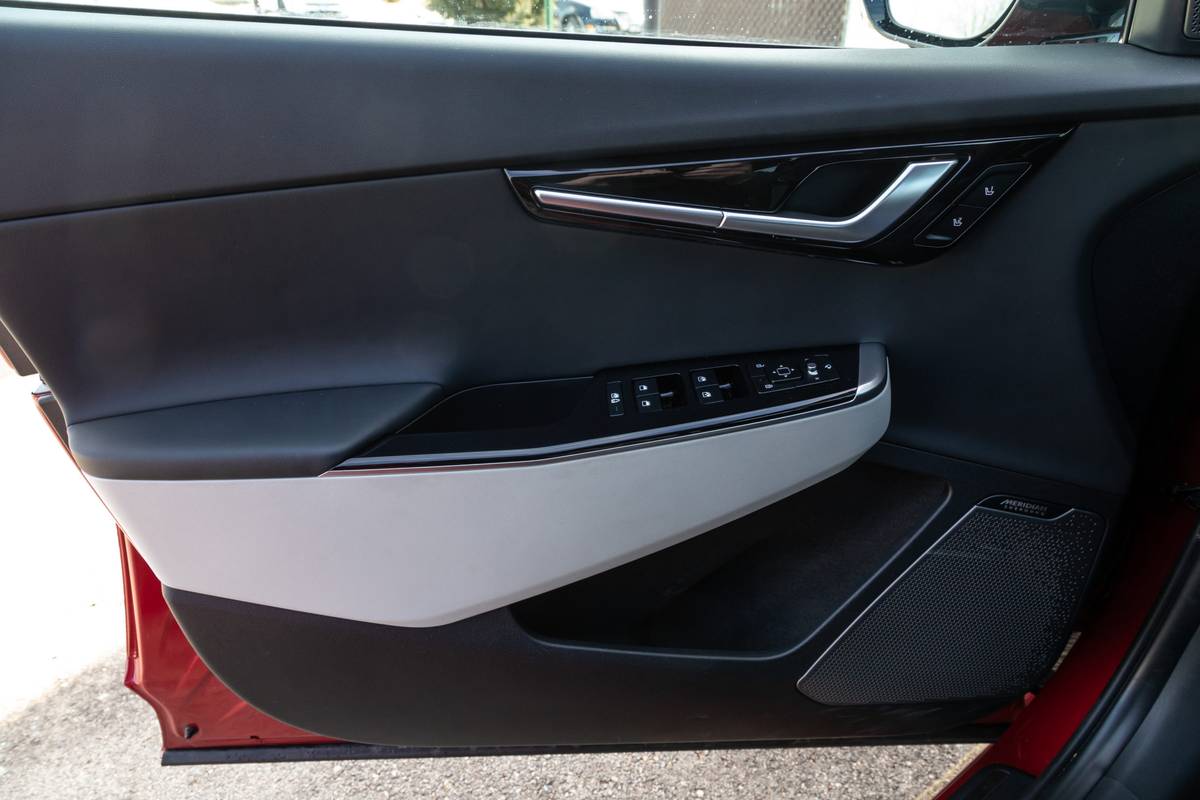
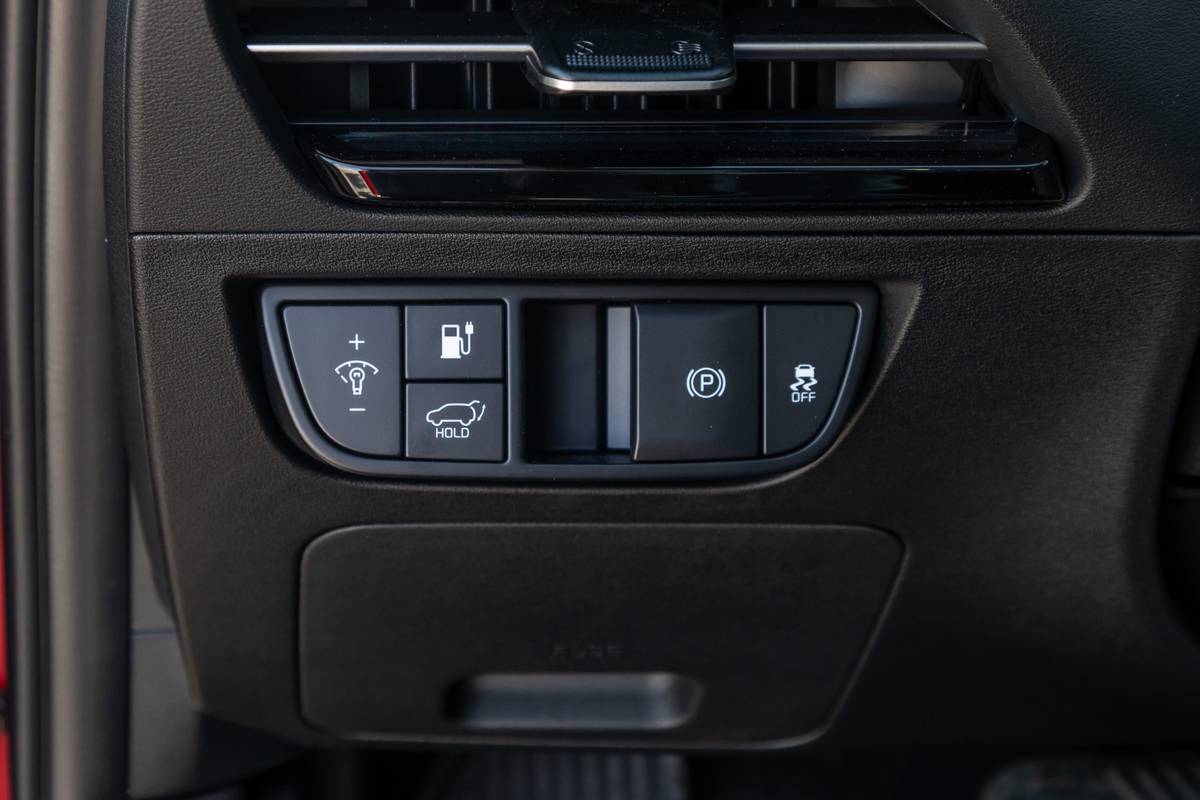

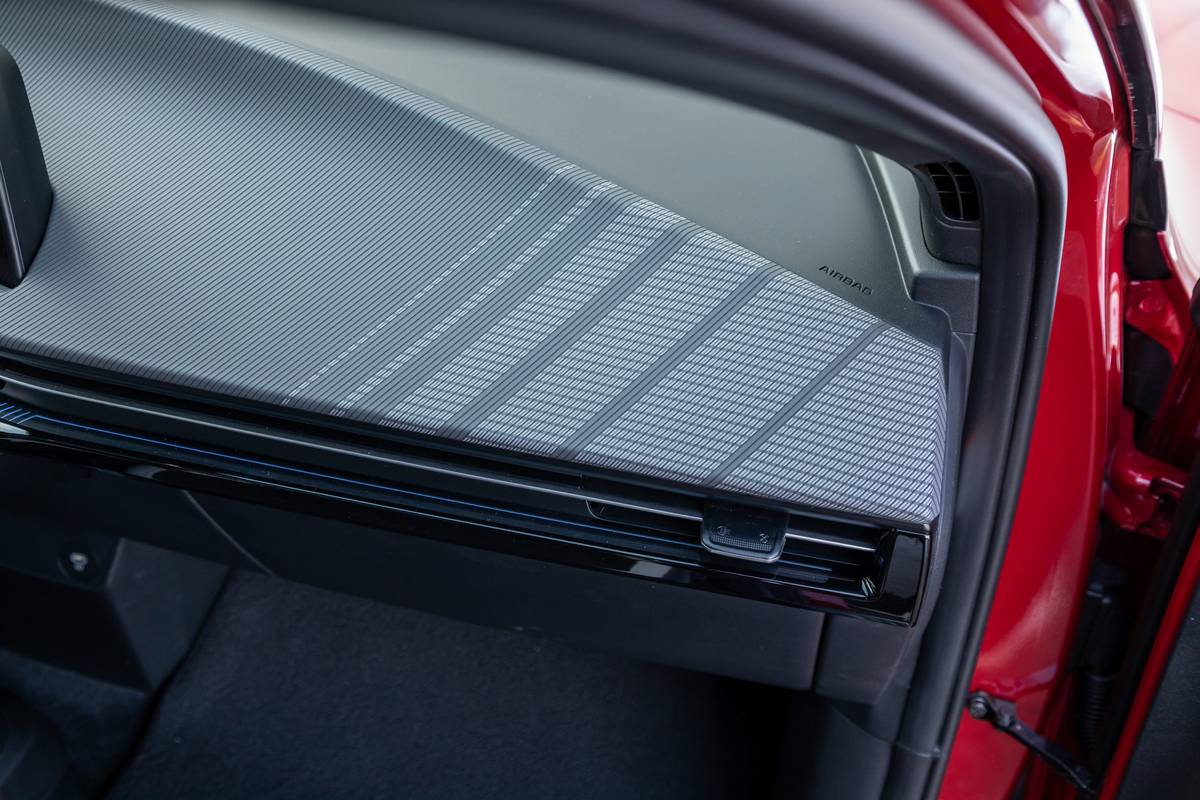
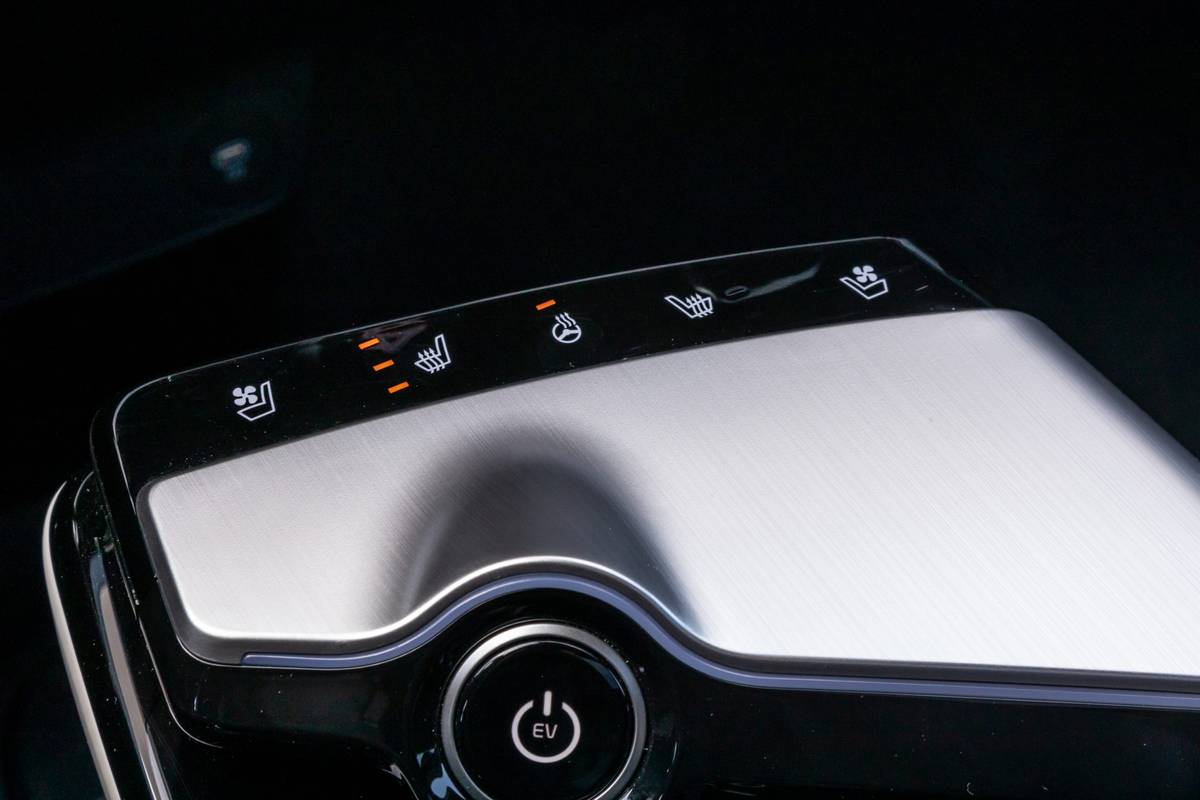
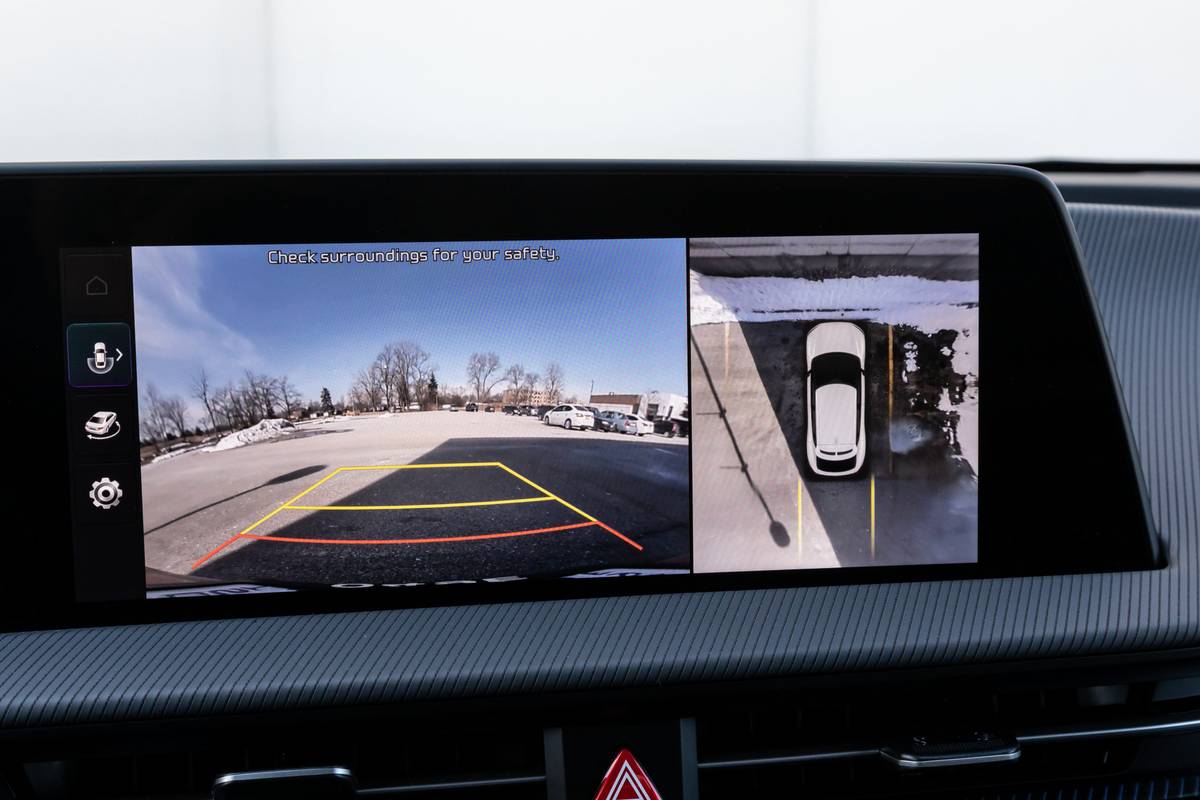
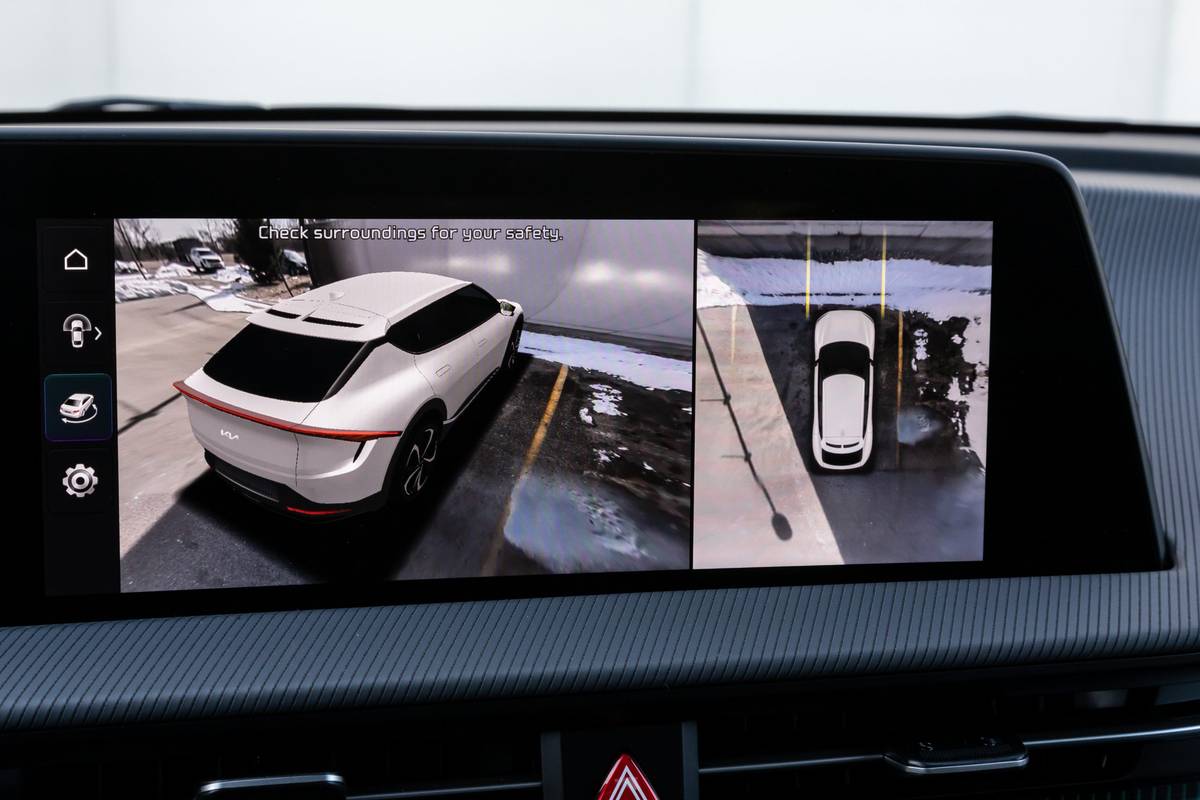
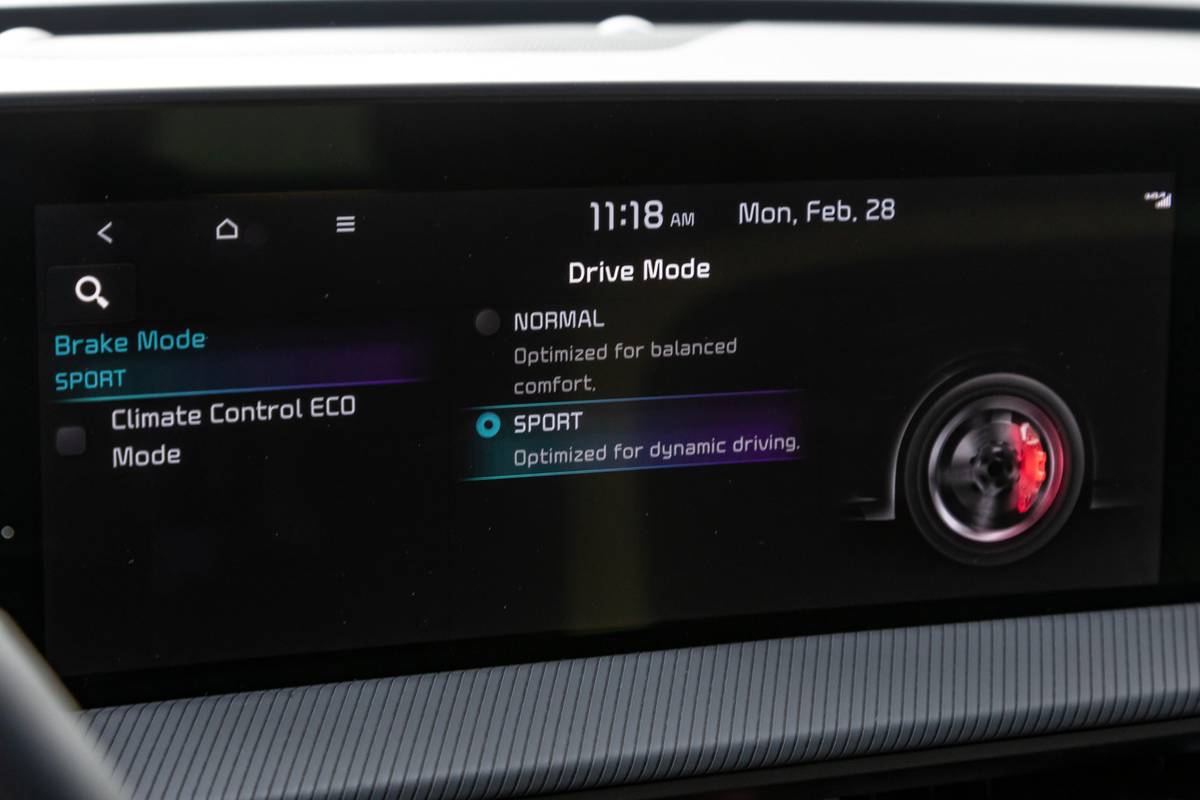

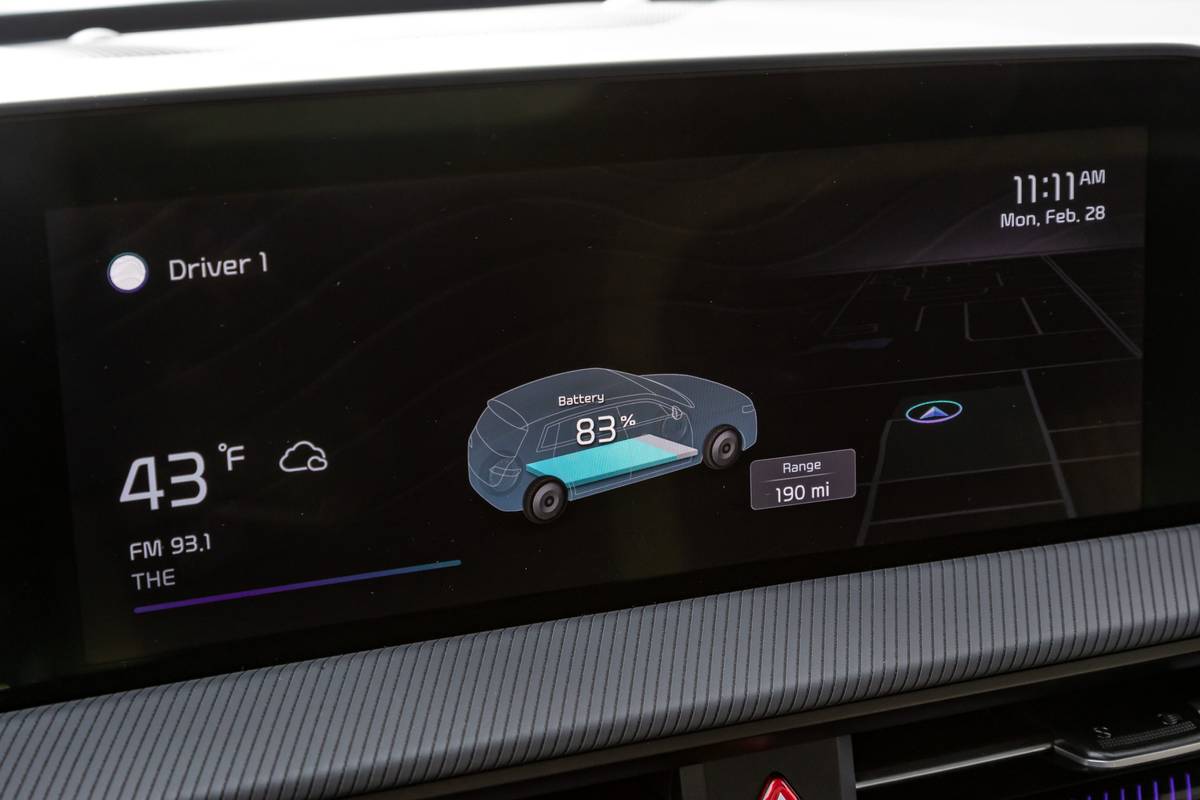
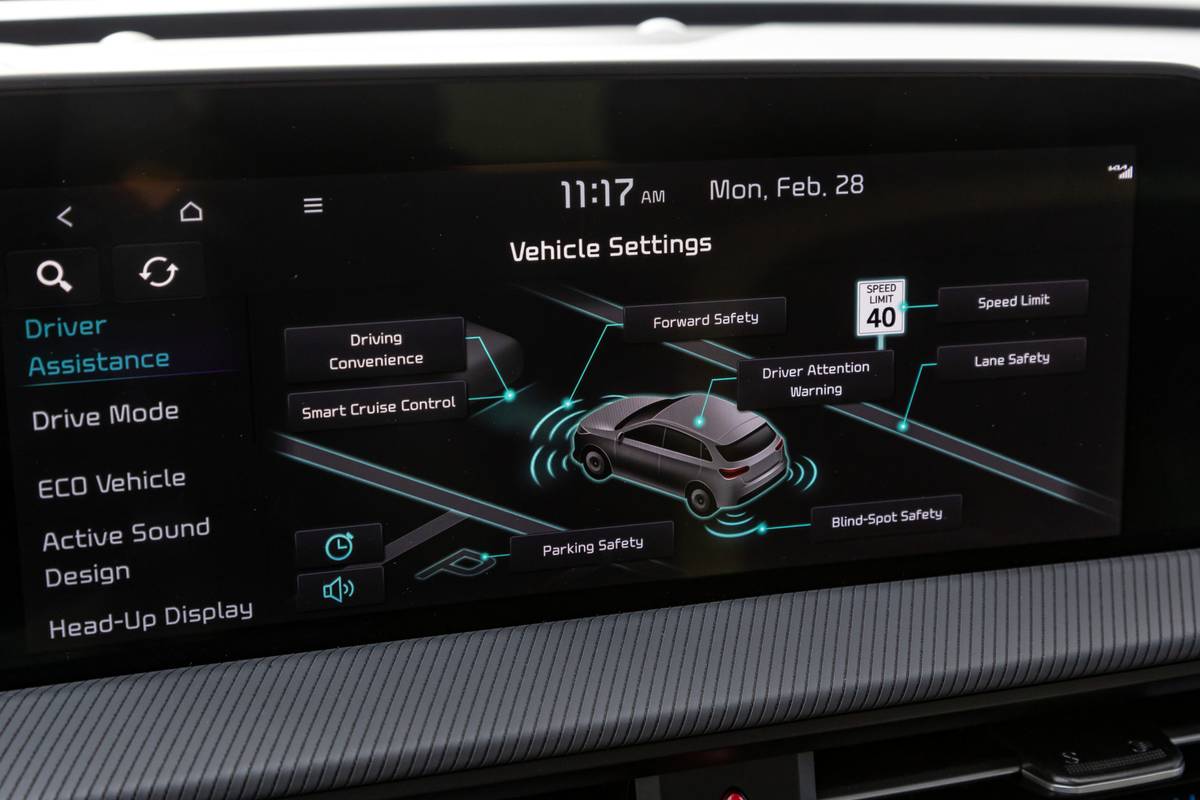
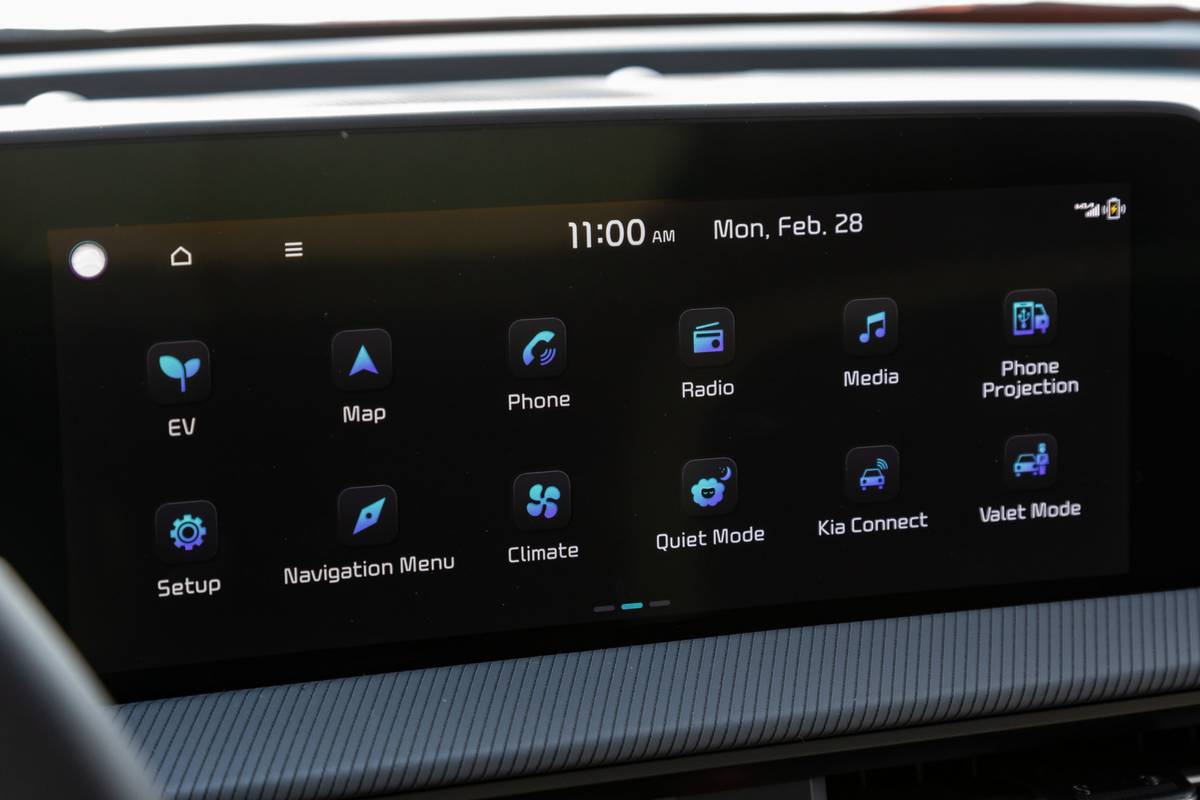
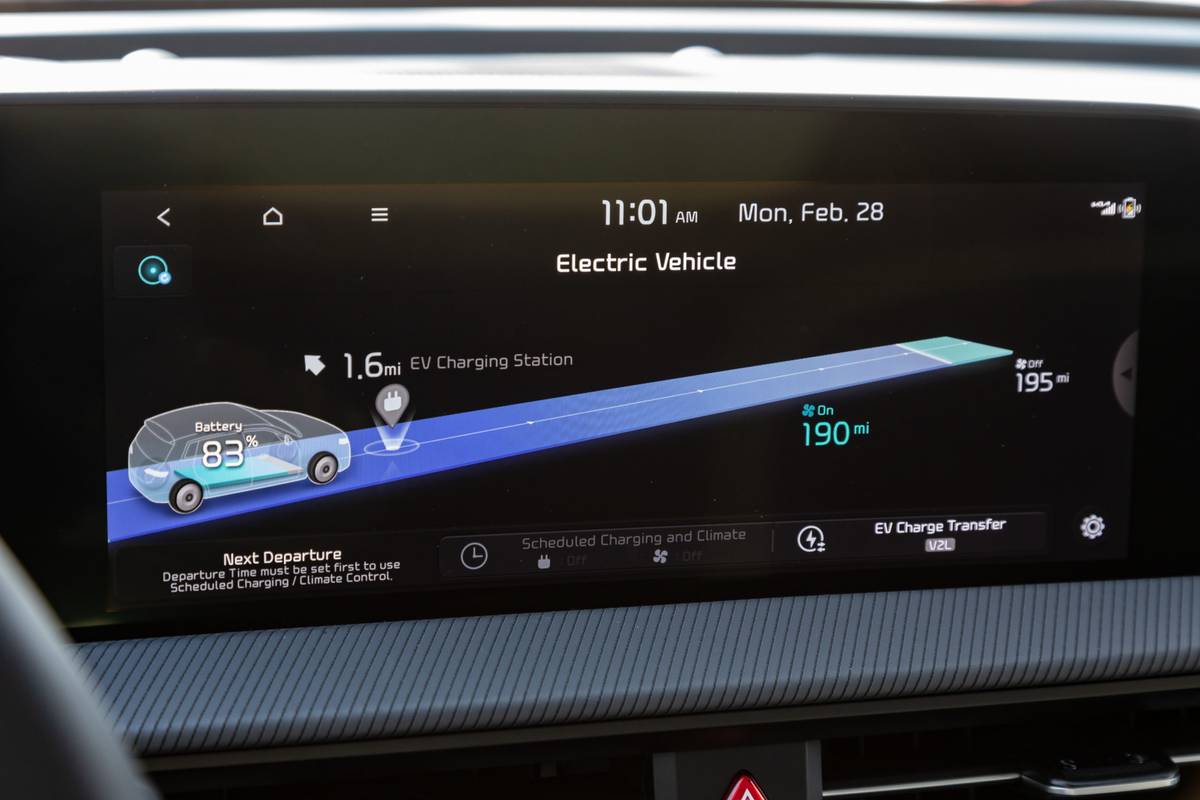
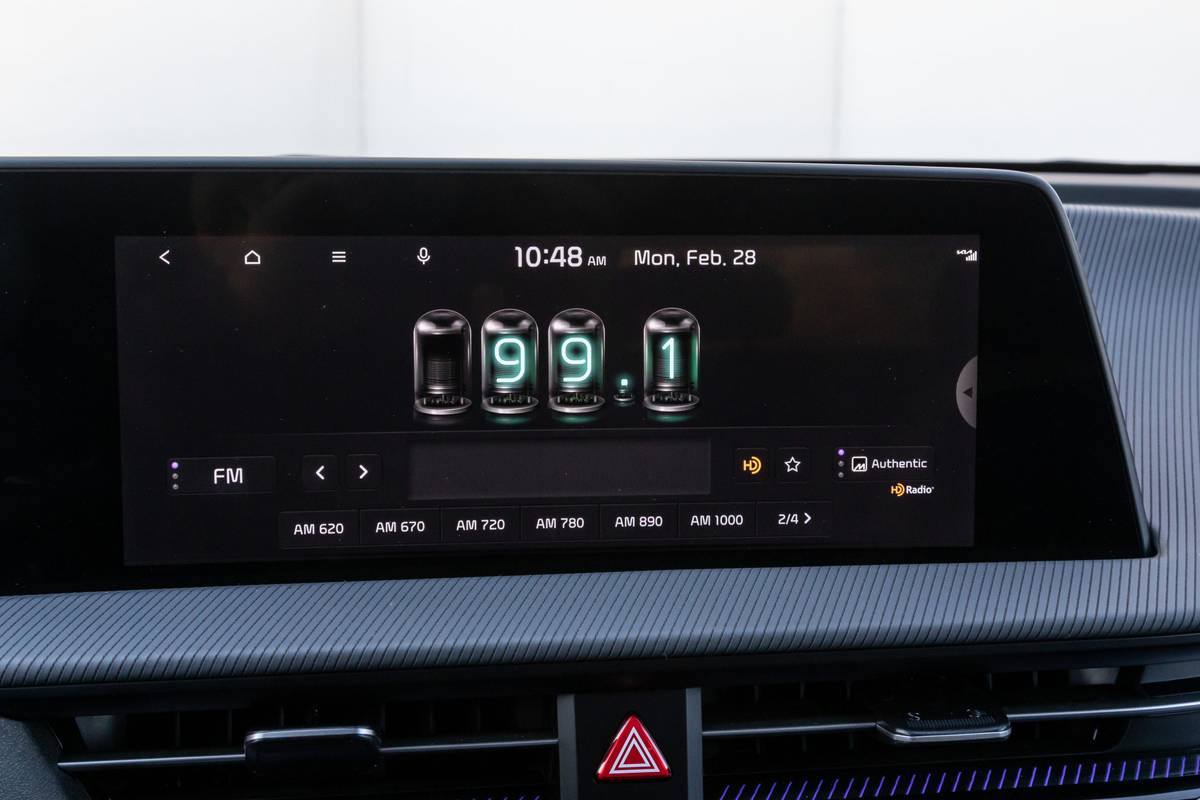
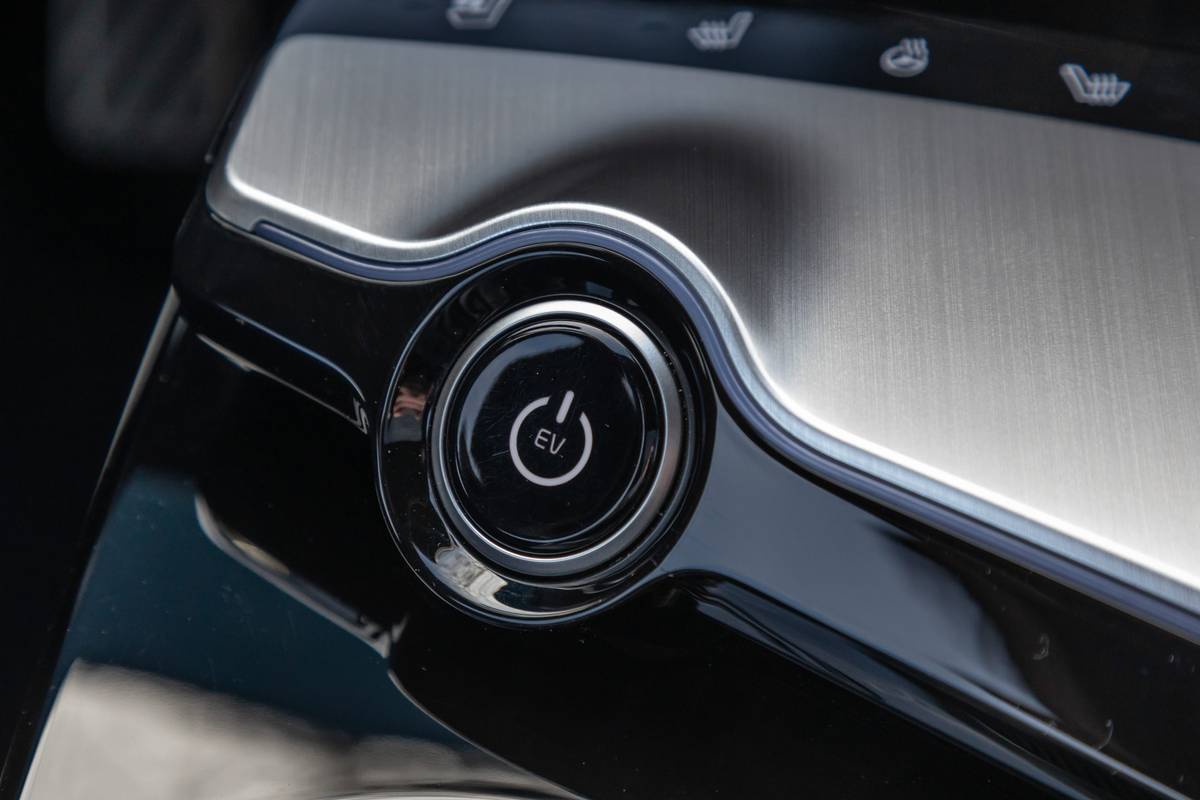
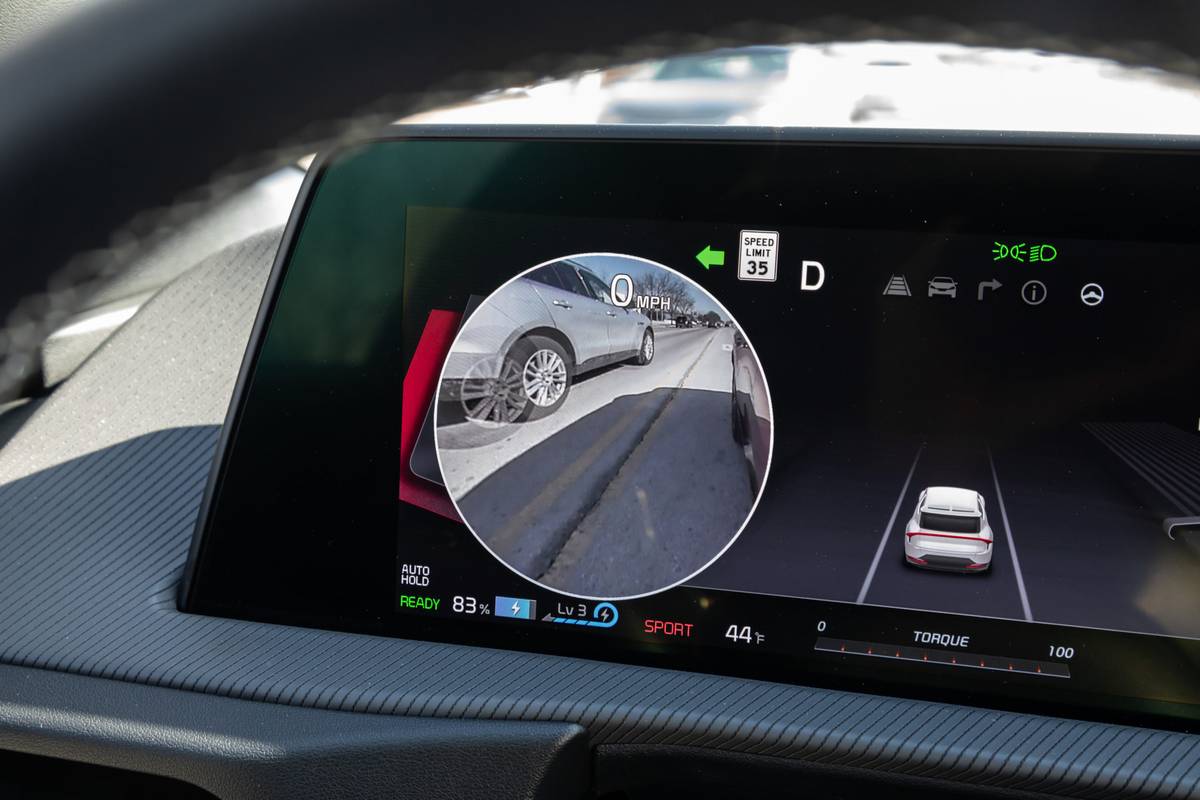
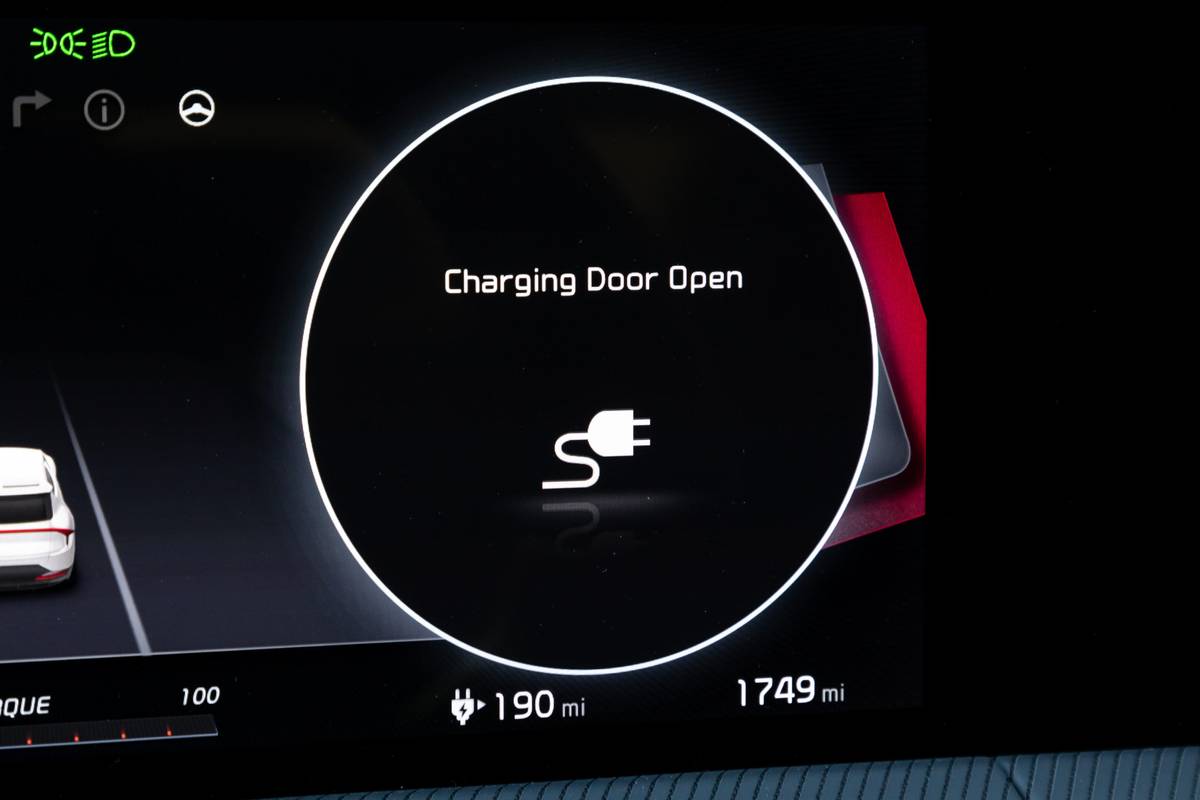
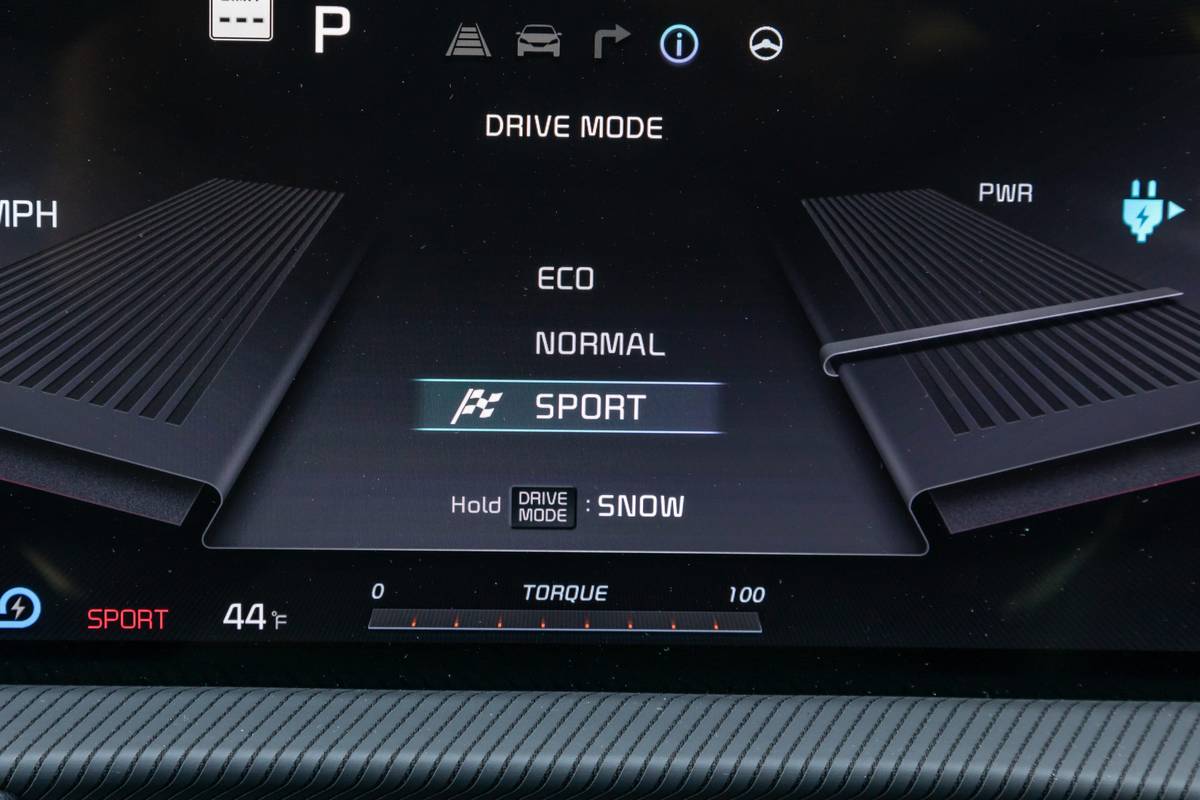
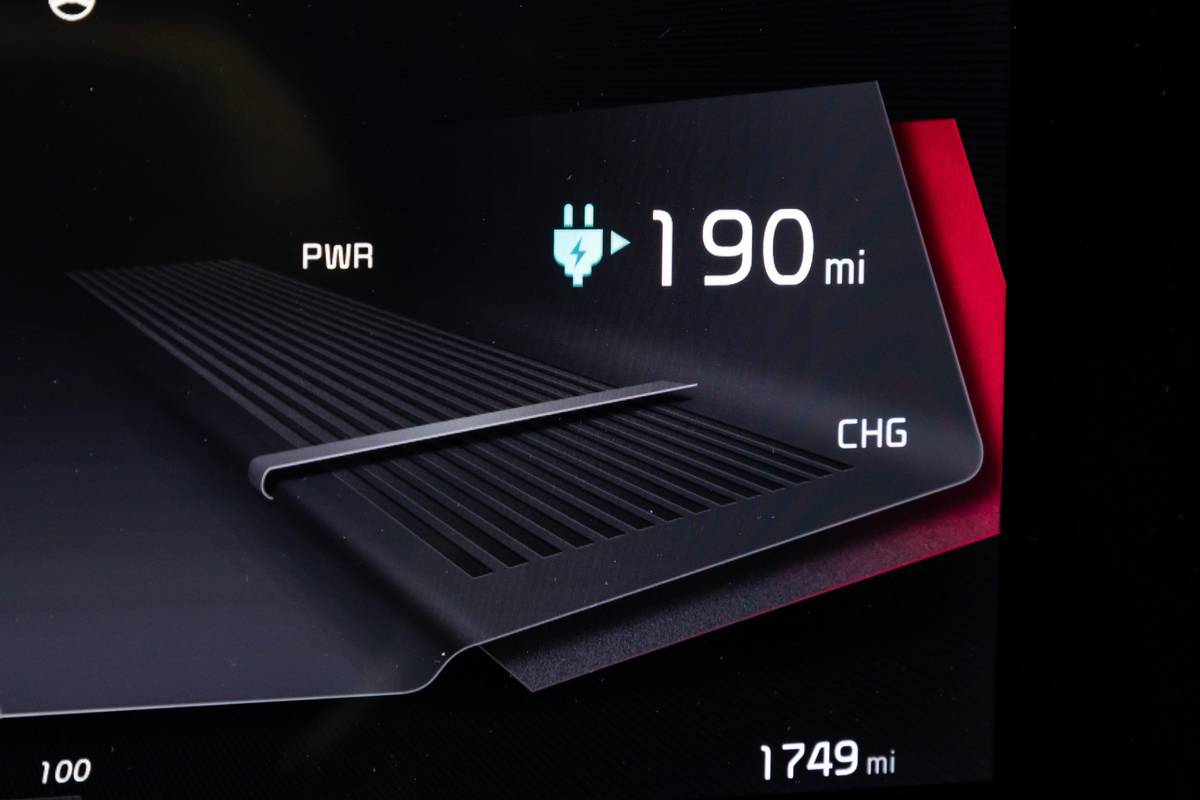
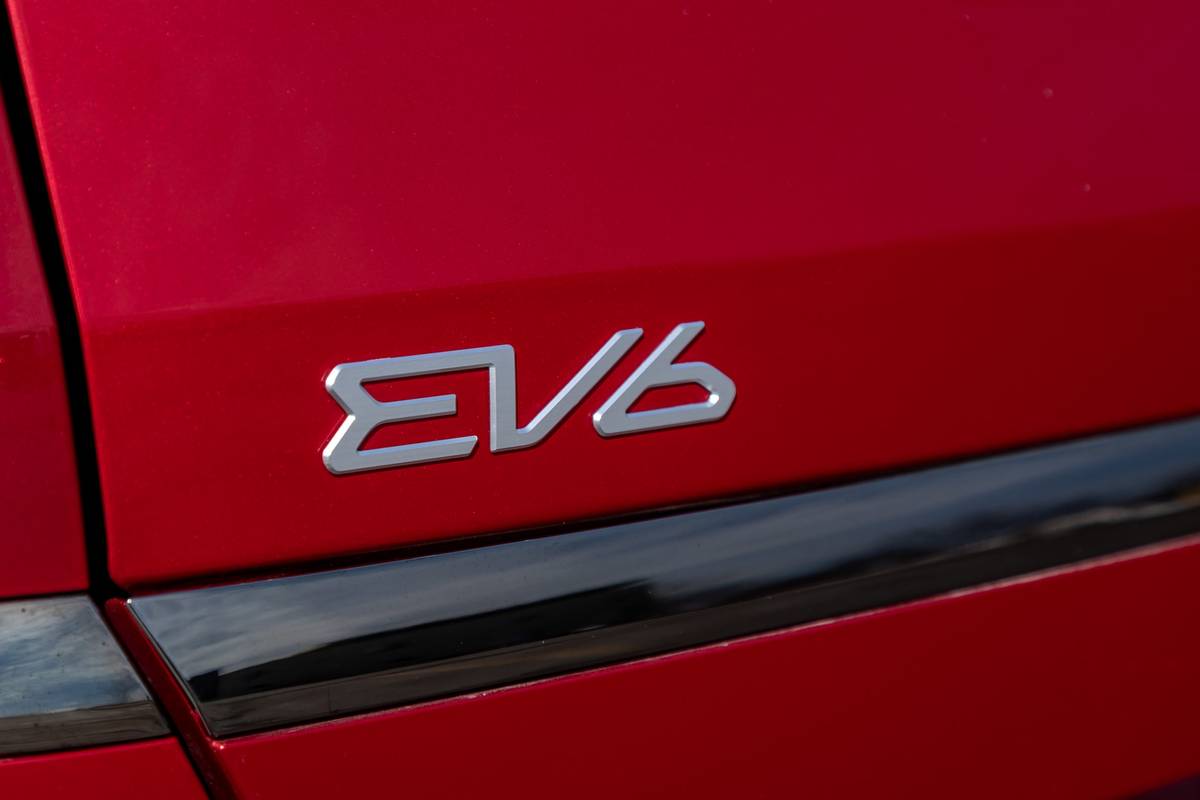
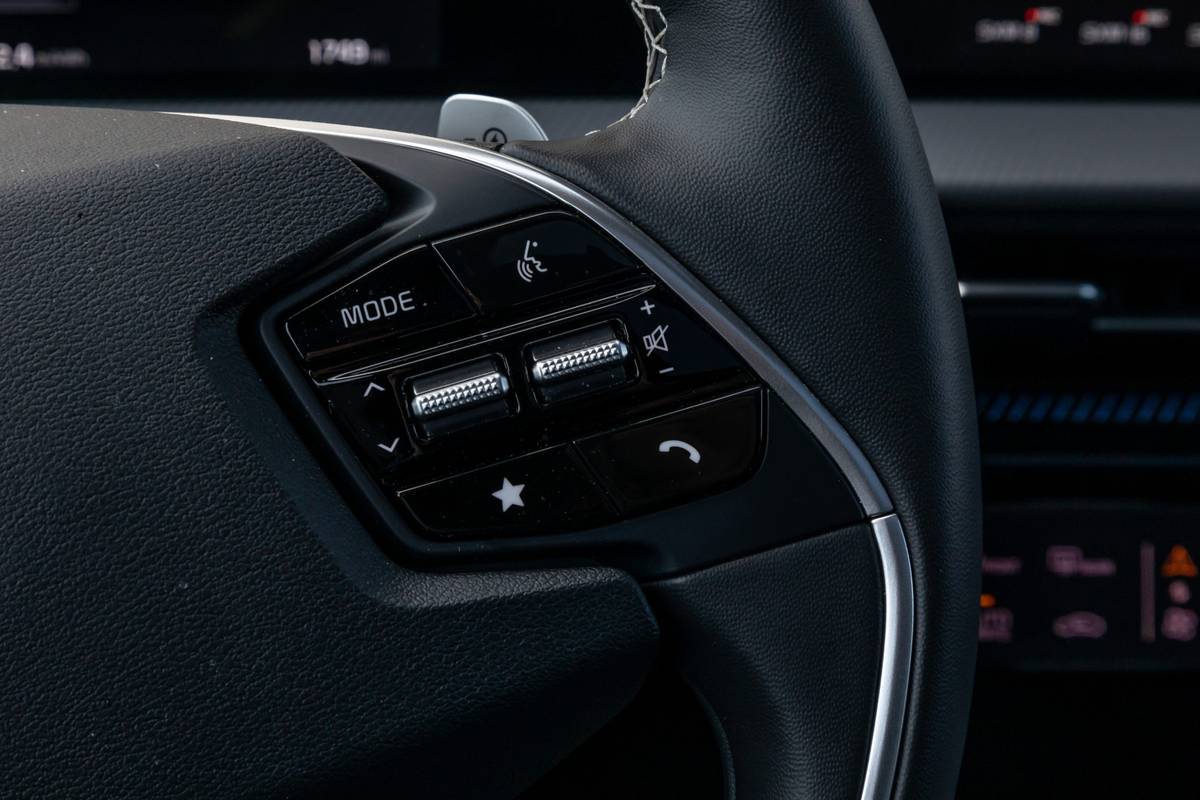
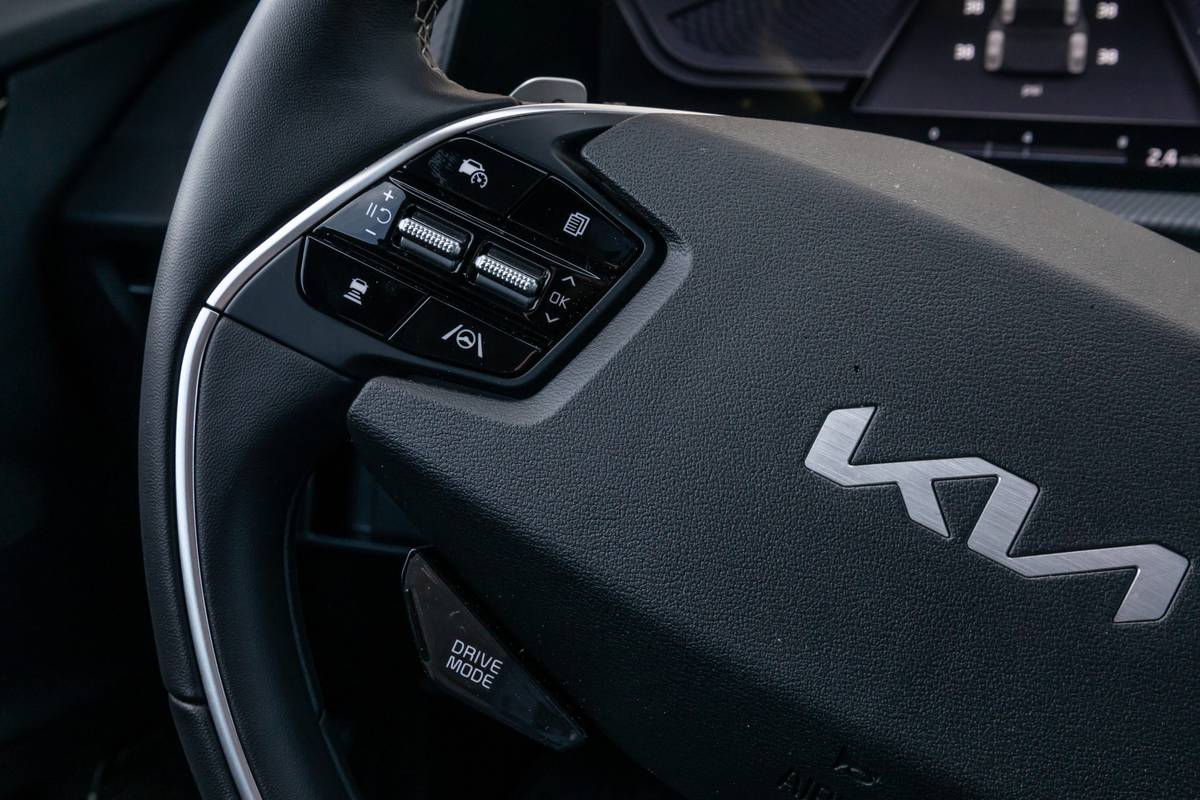
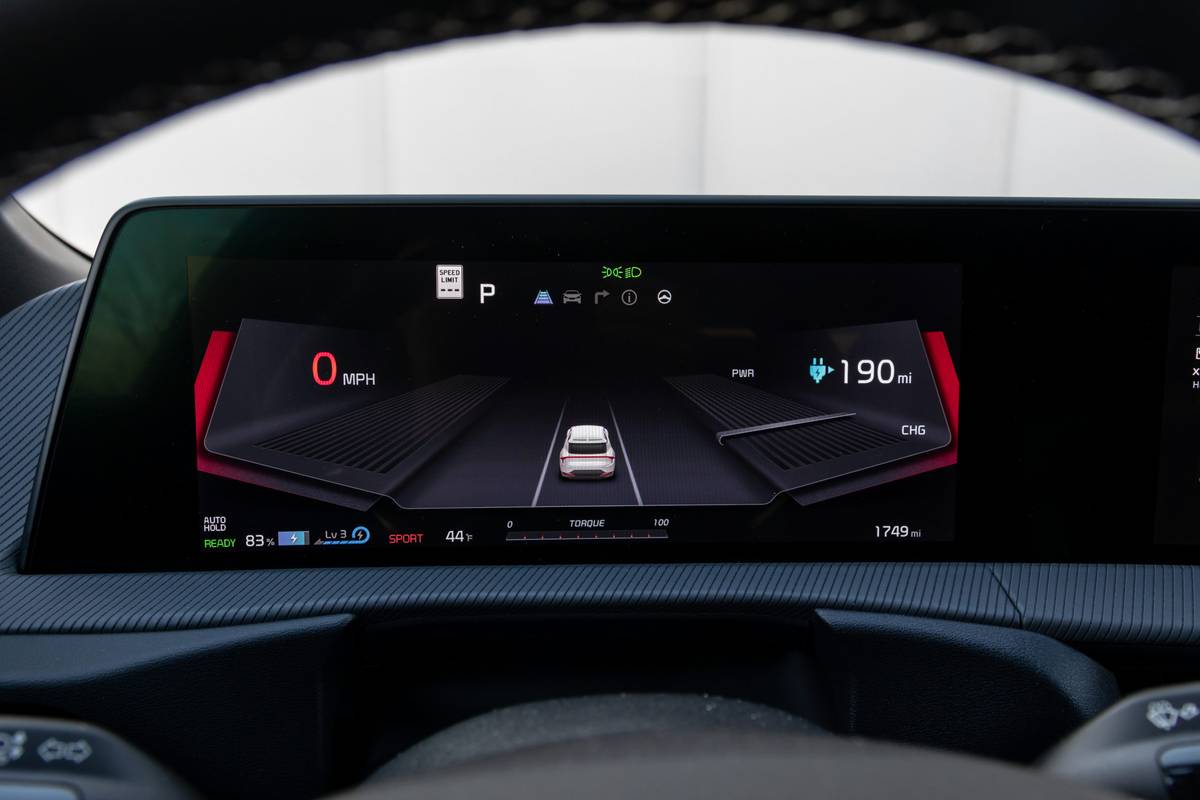
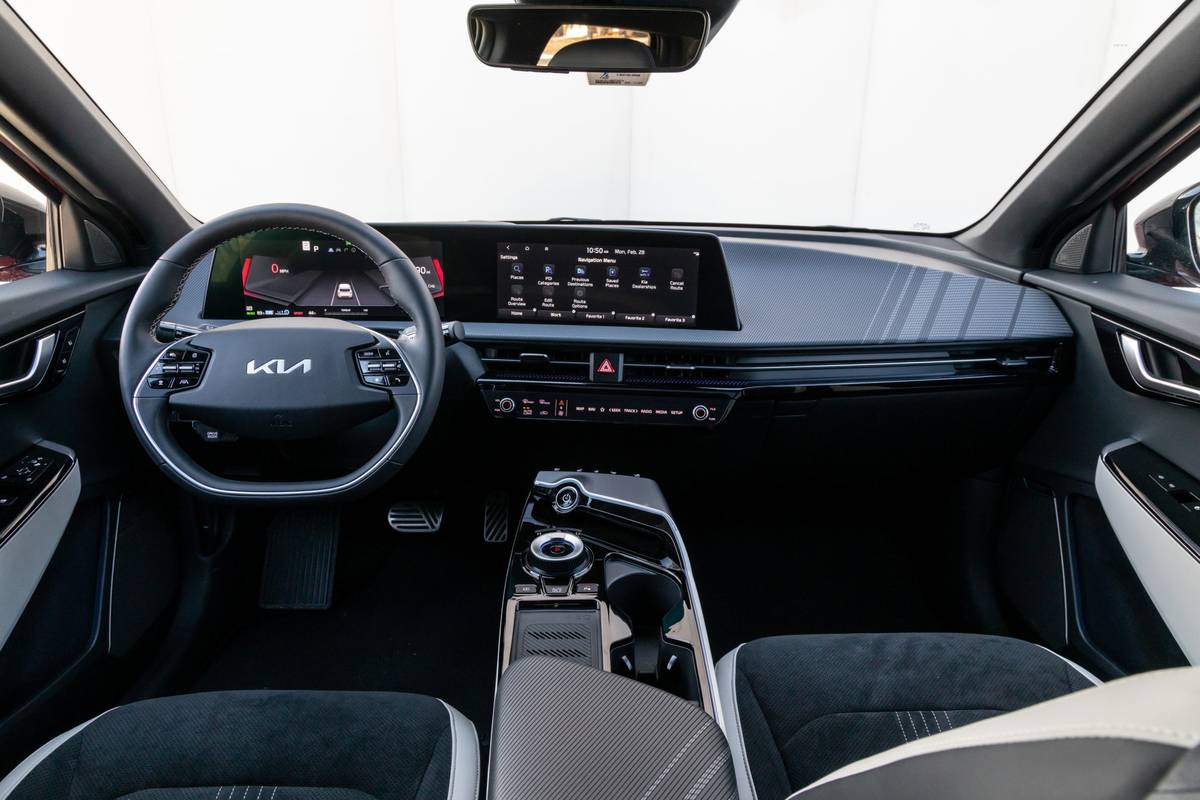

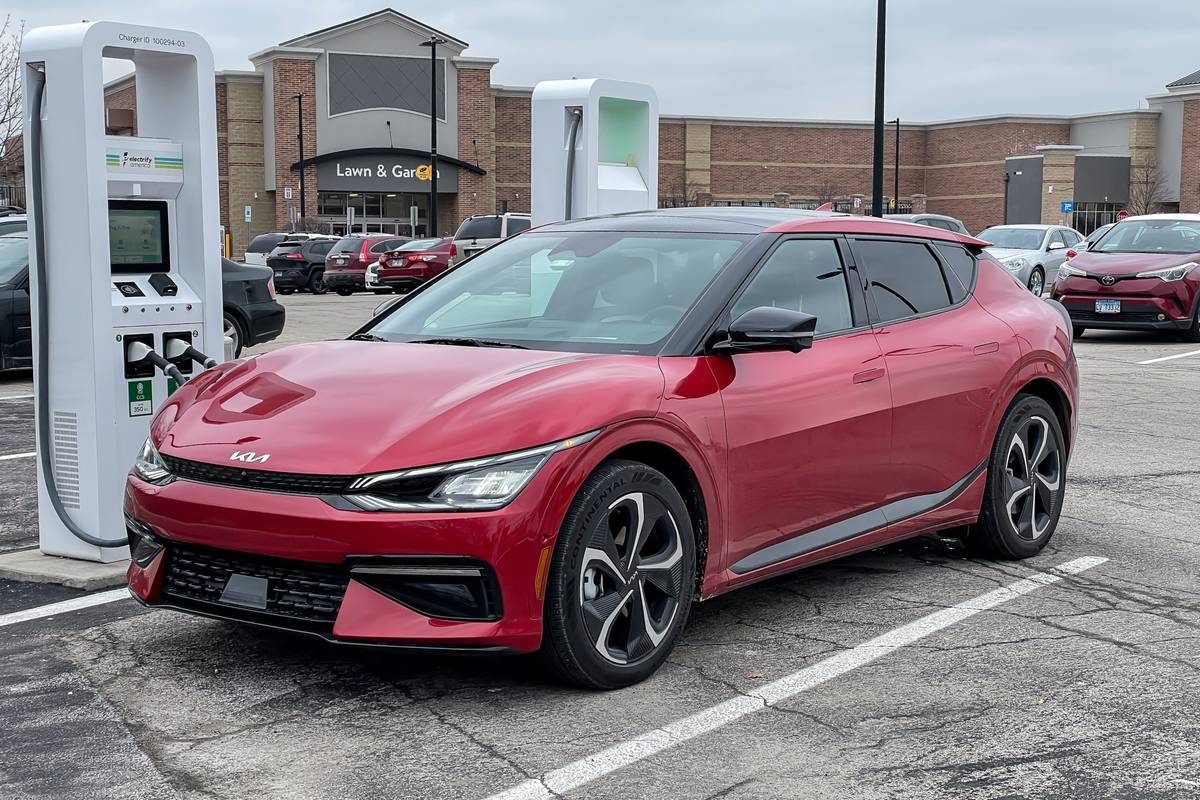
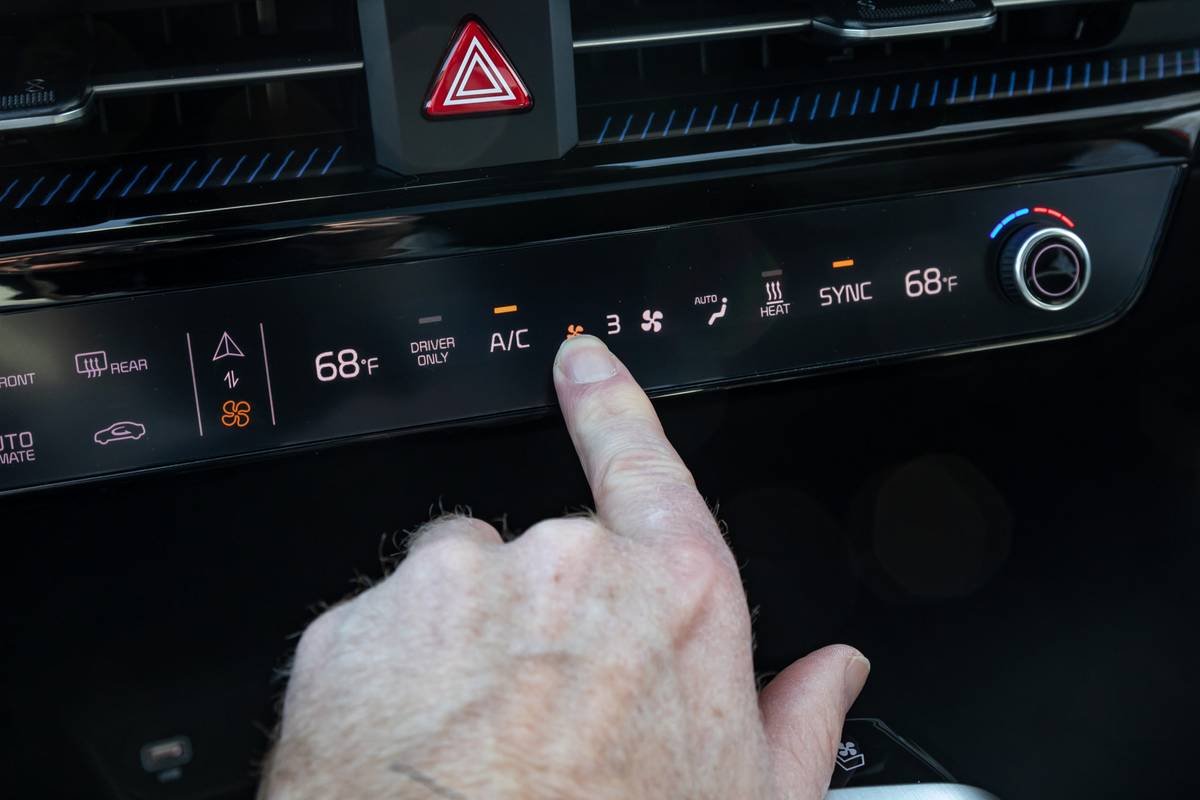

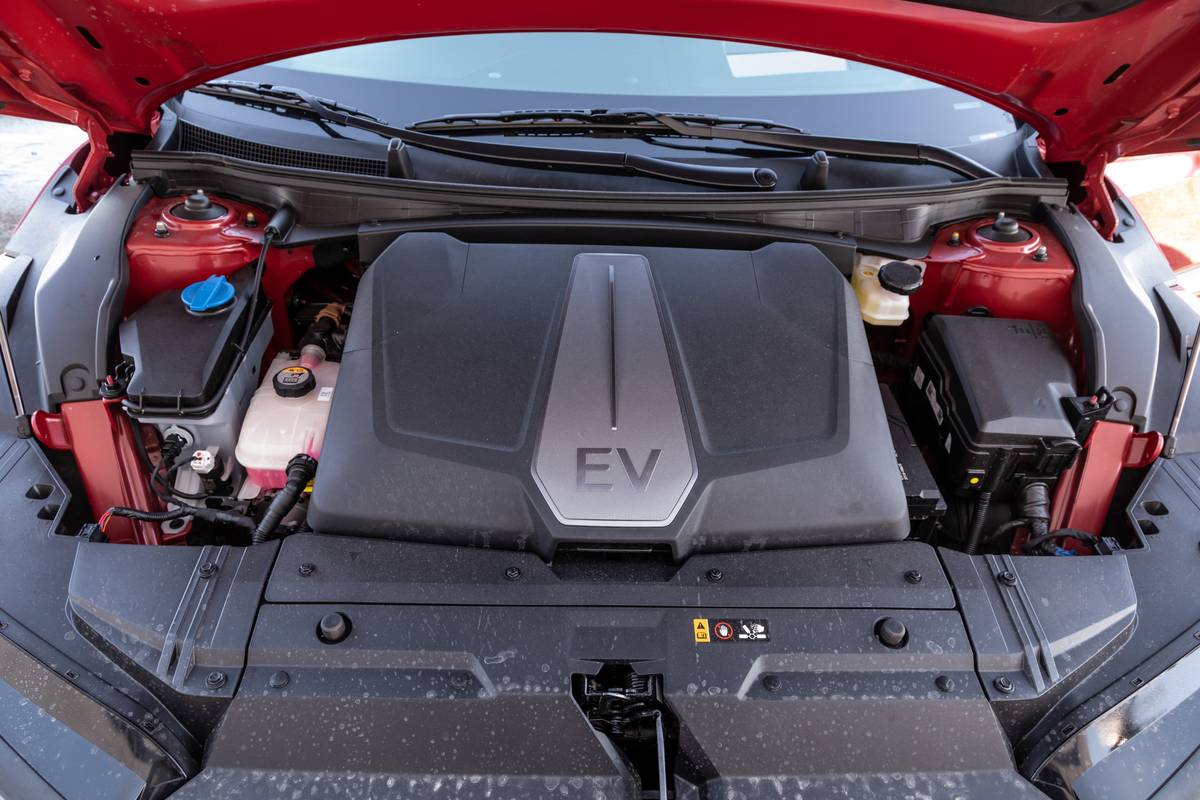
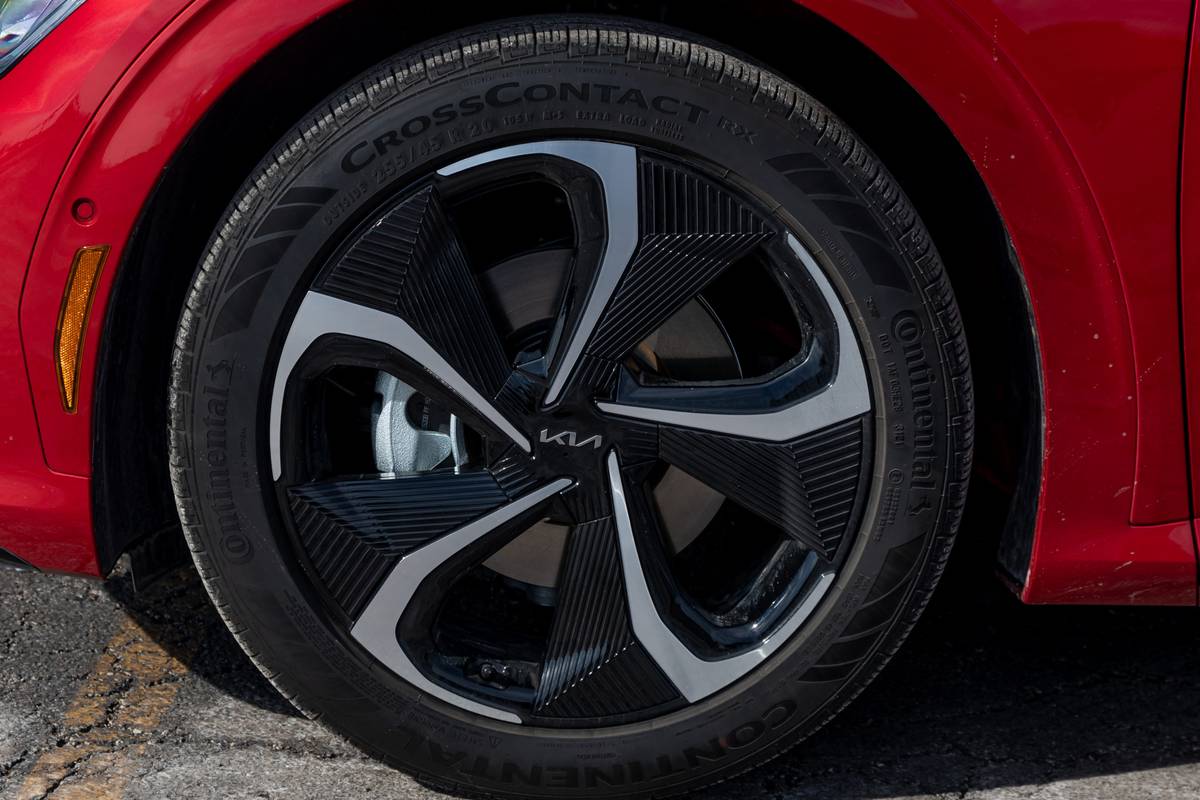
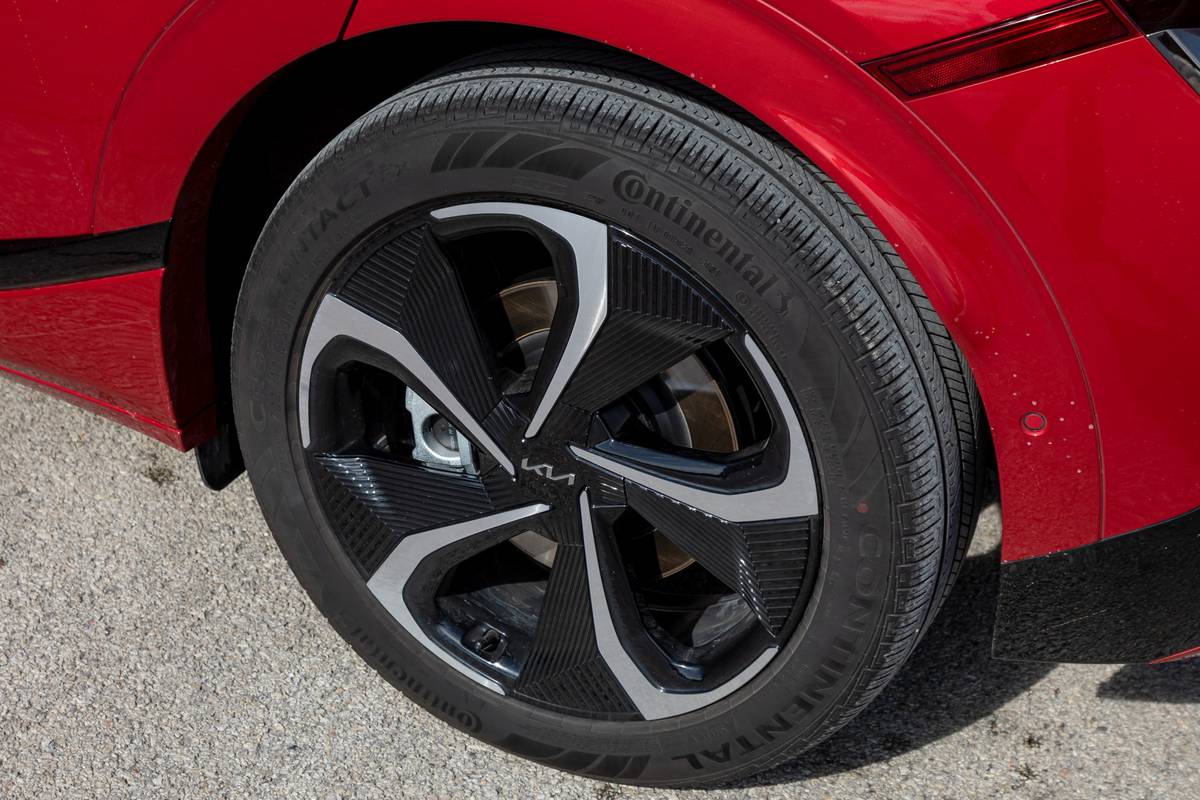




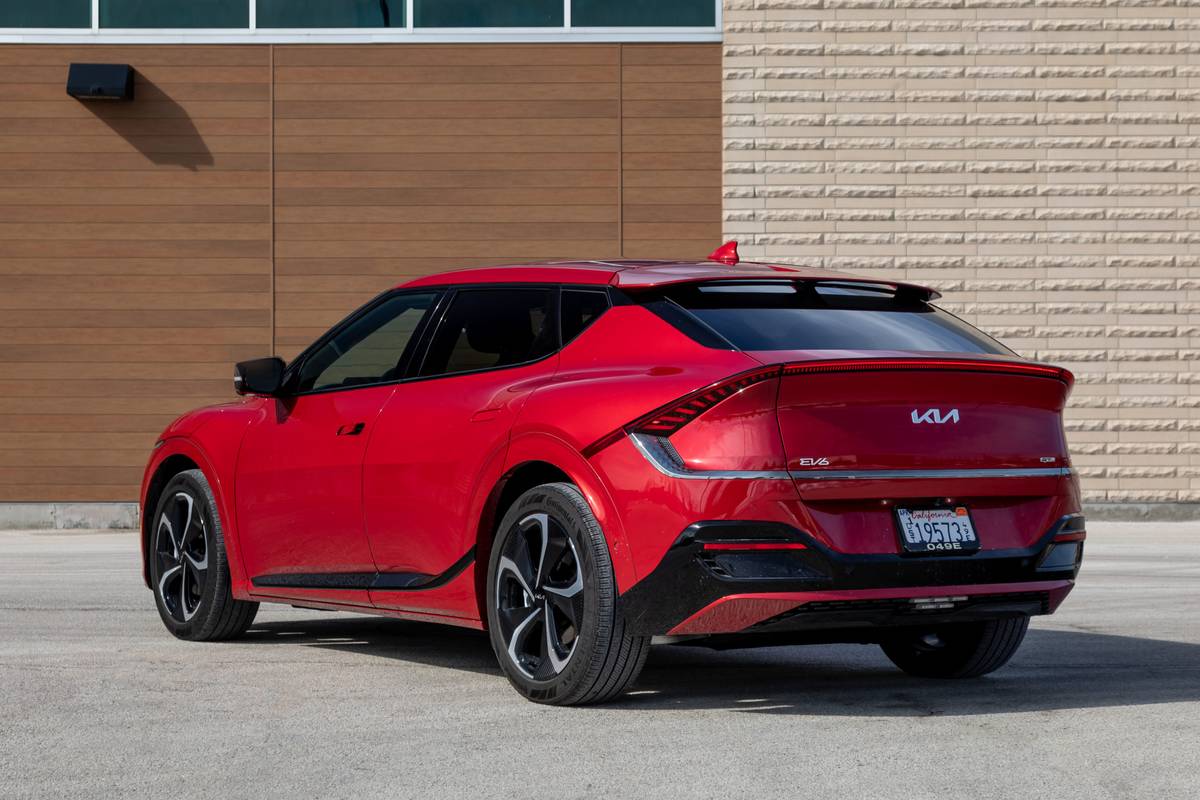
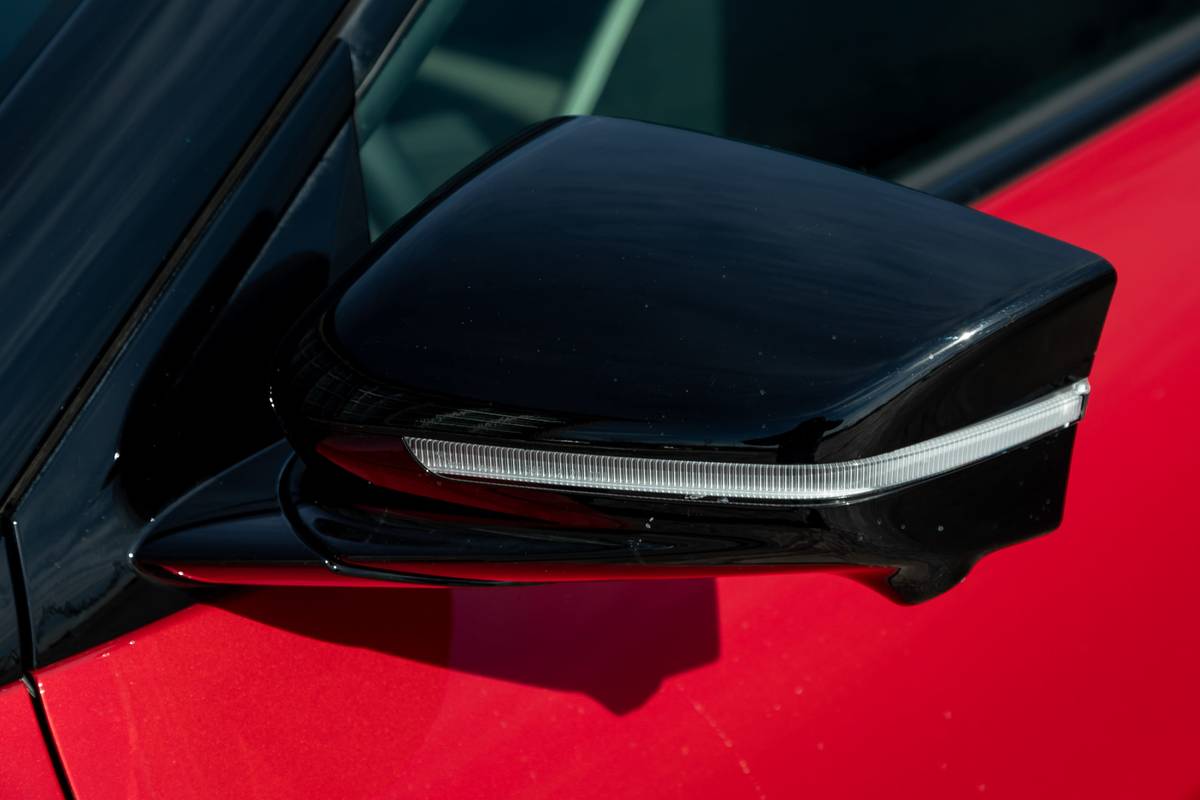
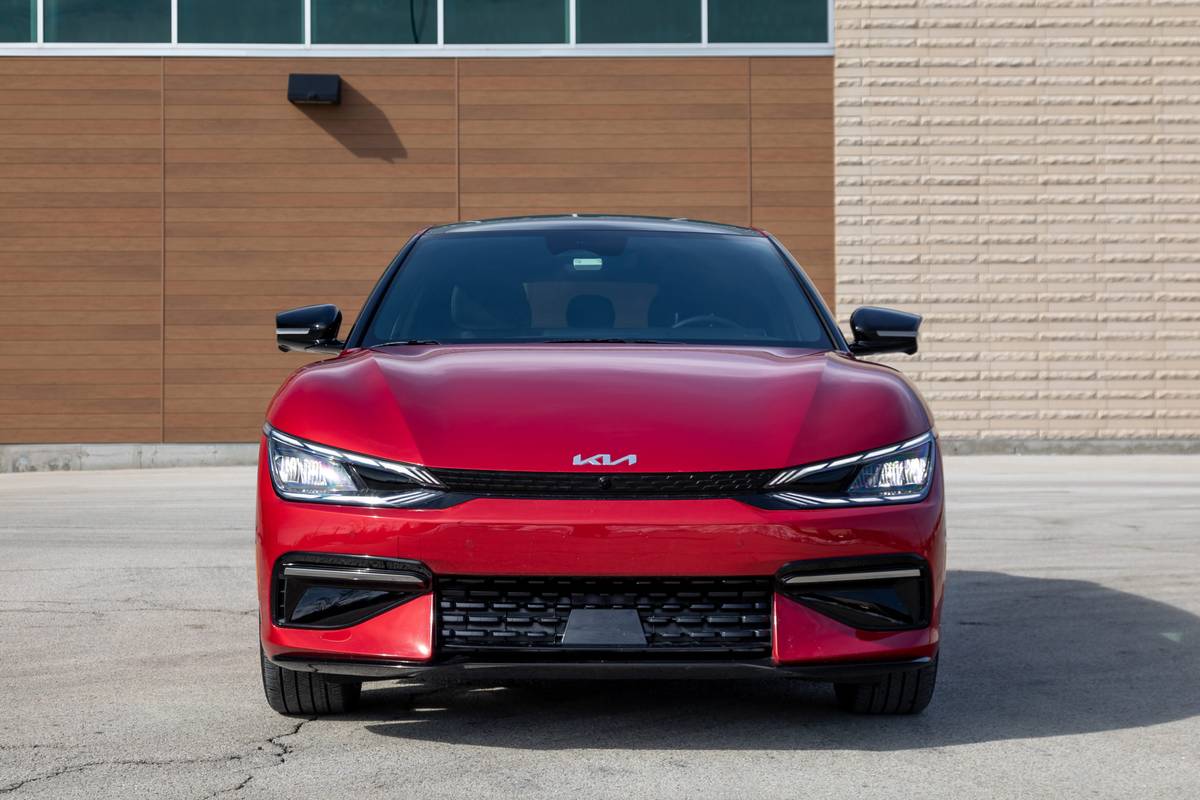

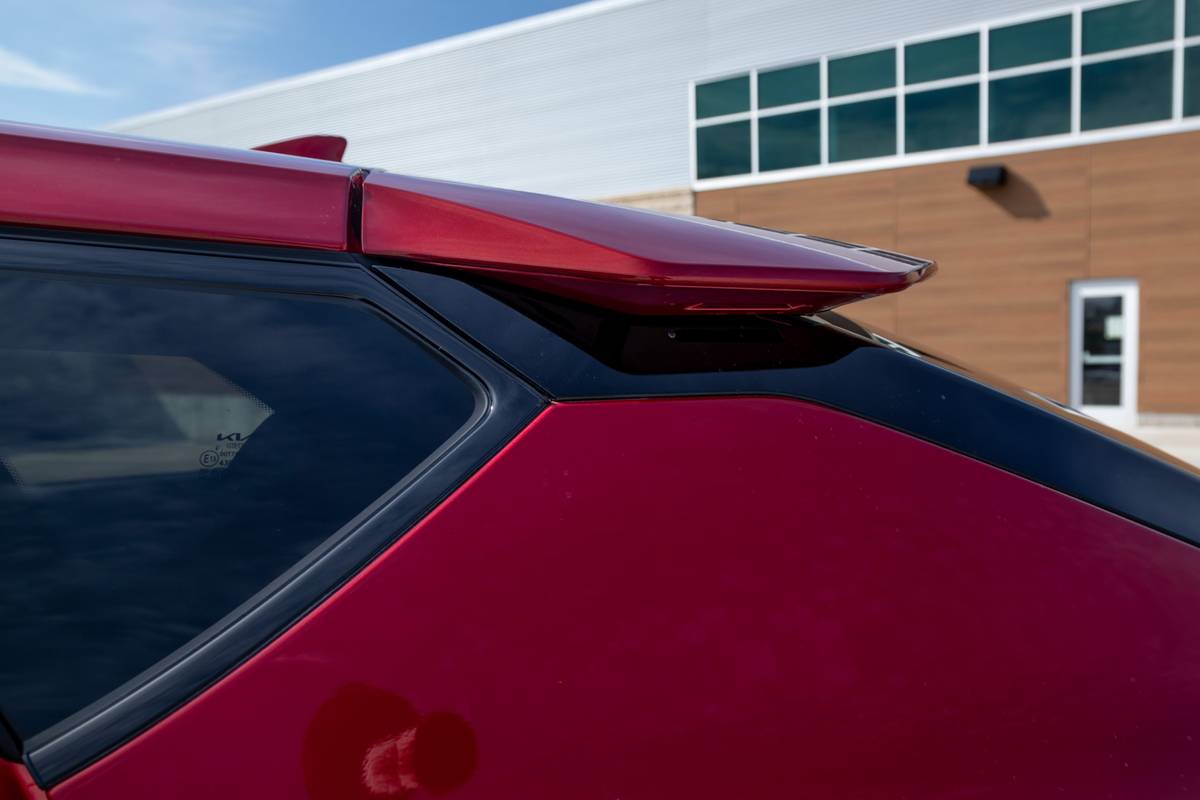
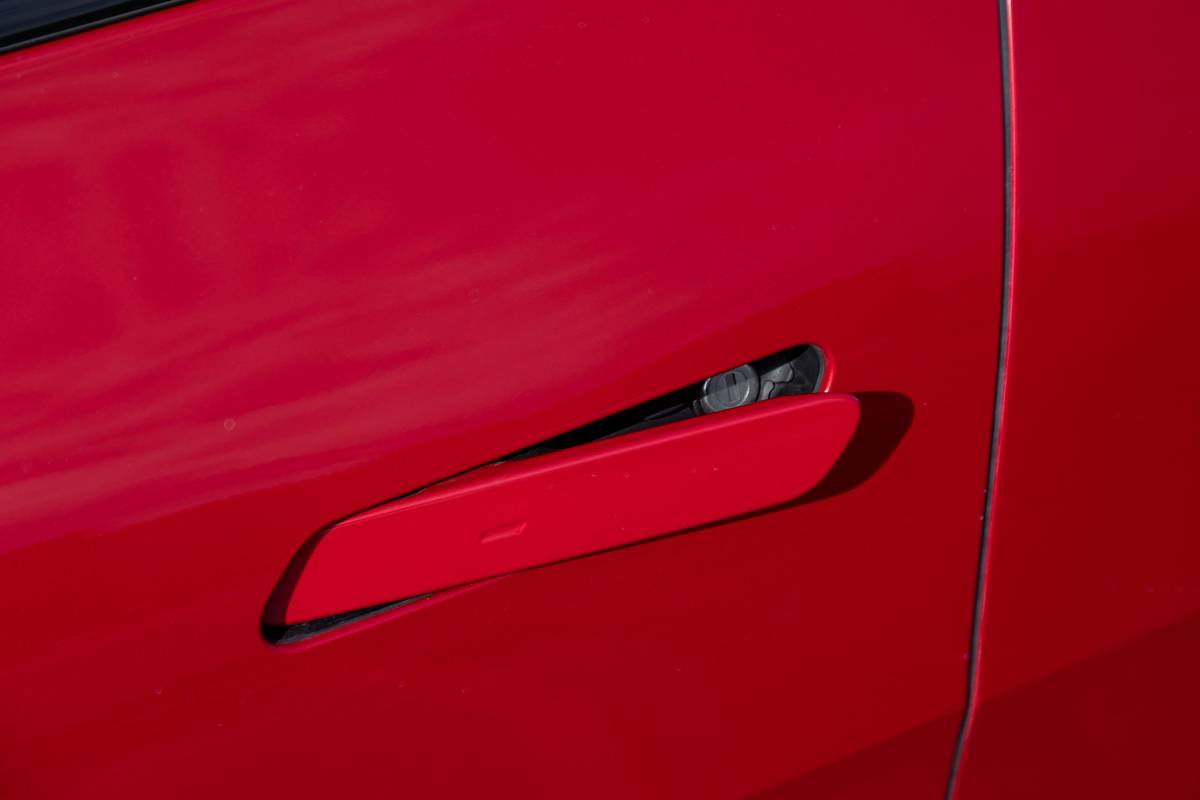
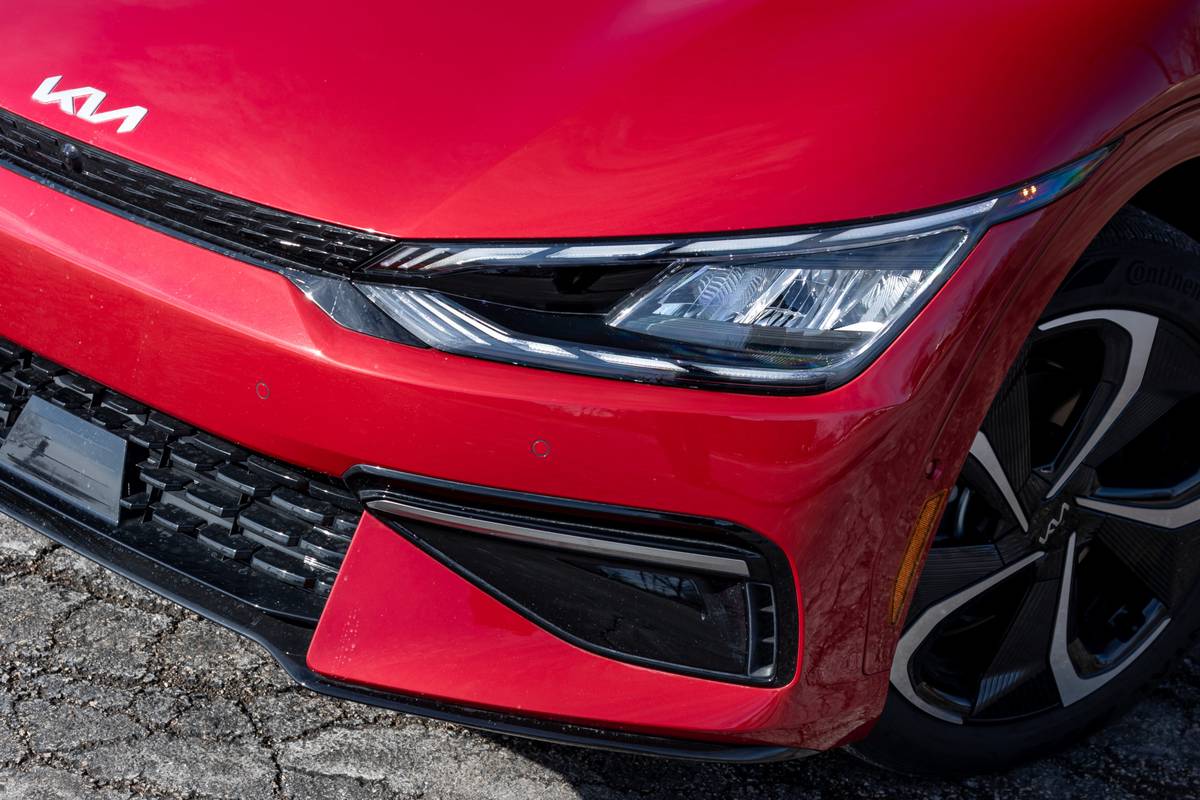

 Latch
Latch
 Infant
Infant
 Rear-facing Convertible
Rear-facing Convertible
 Front-facing Convertible
Front-facing Convertible
 Booster
Booster






